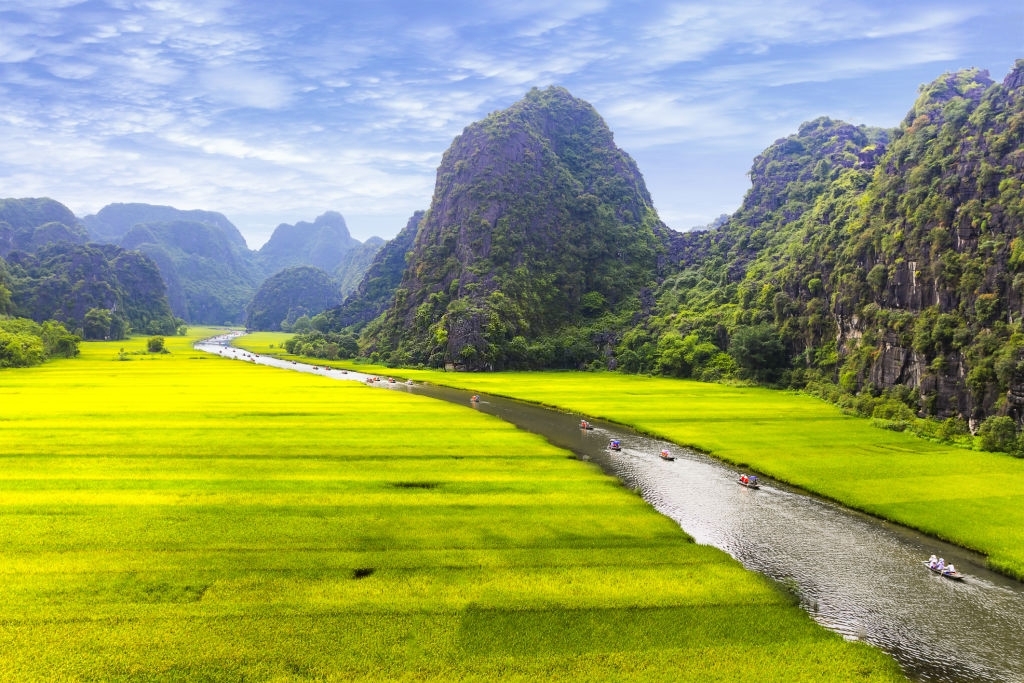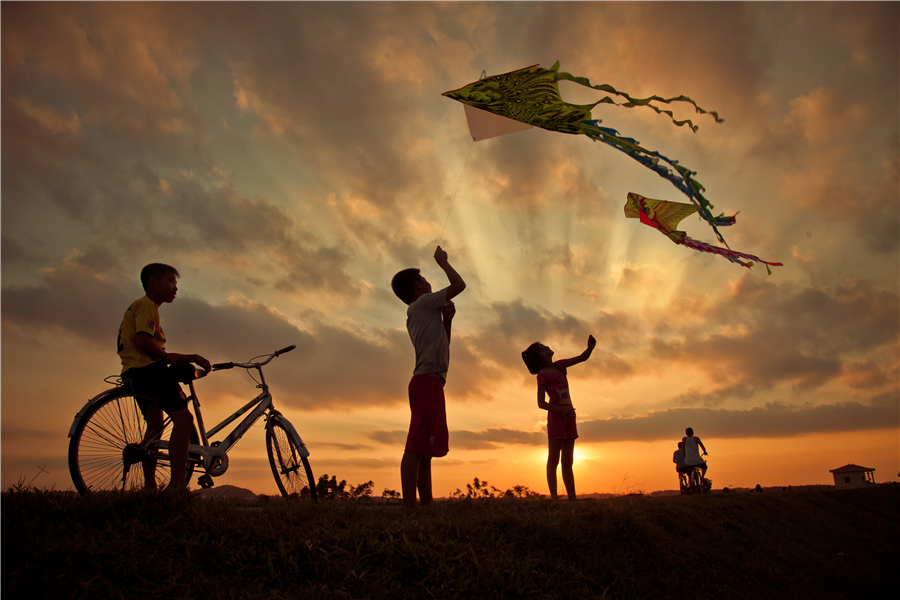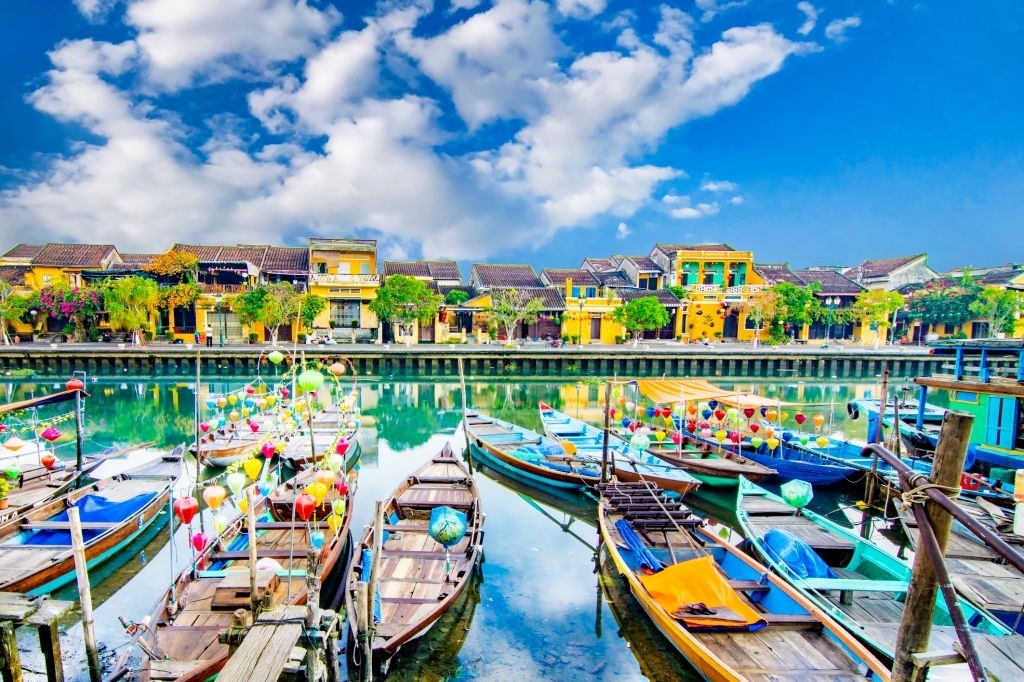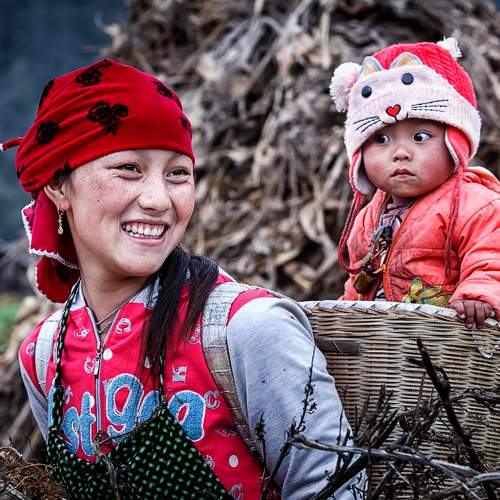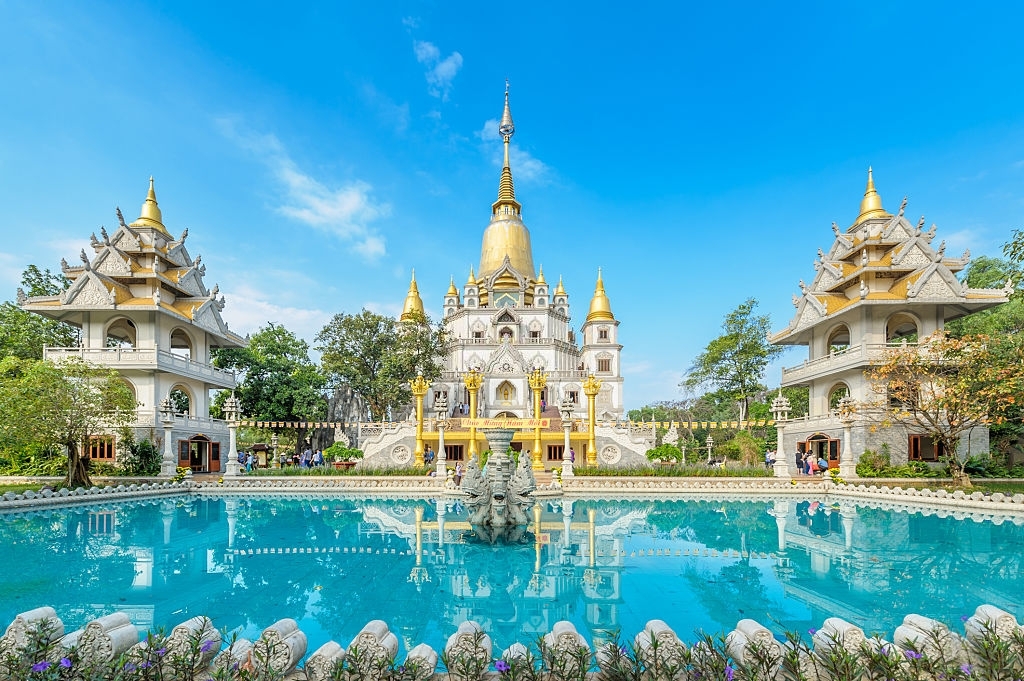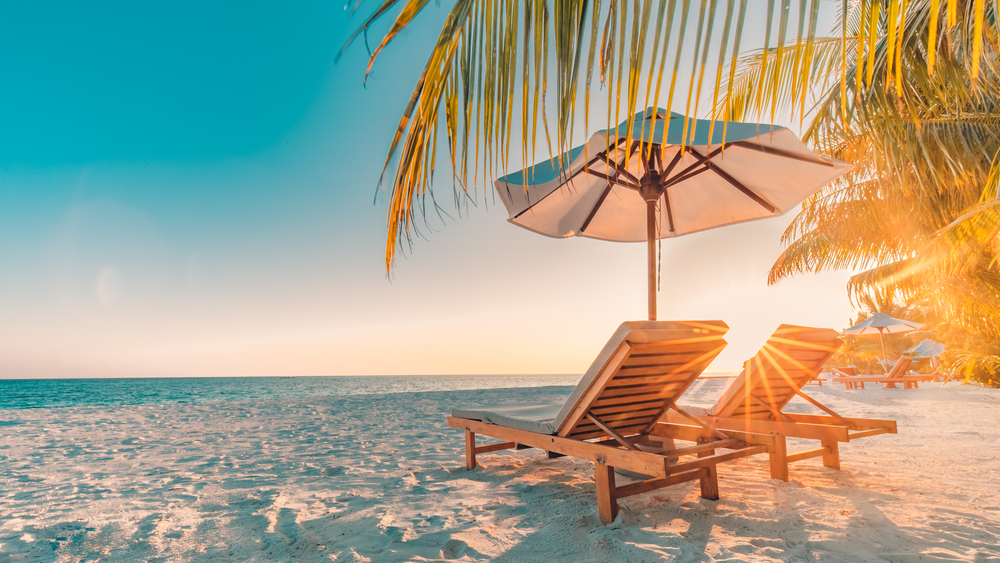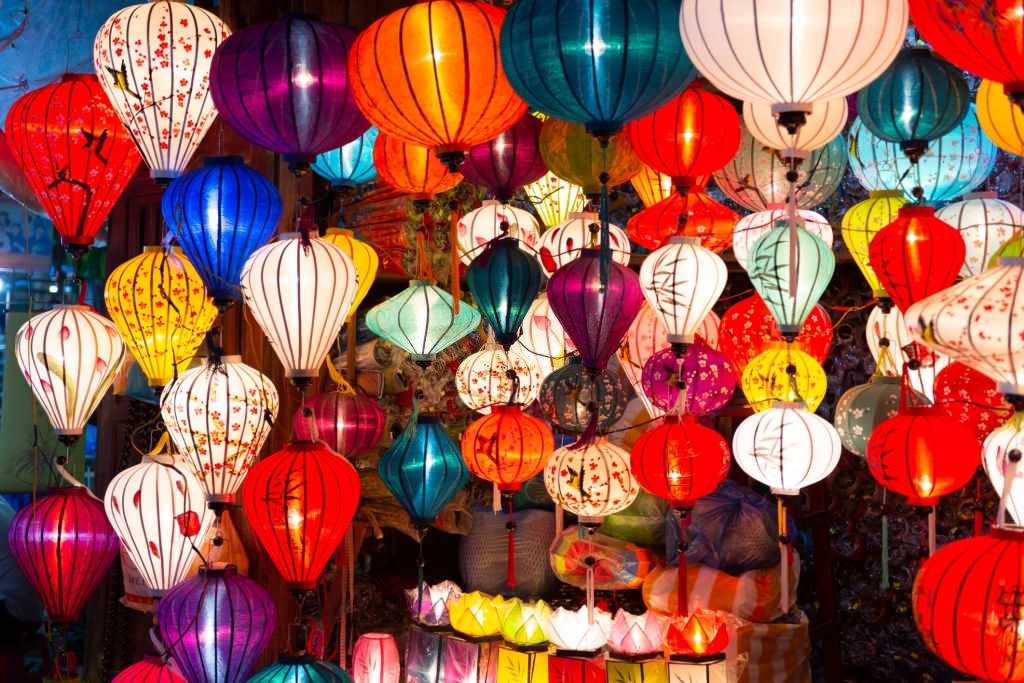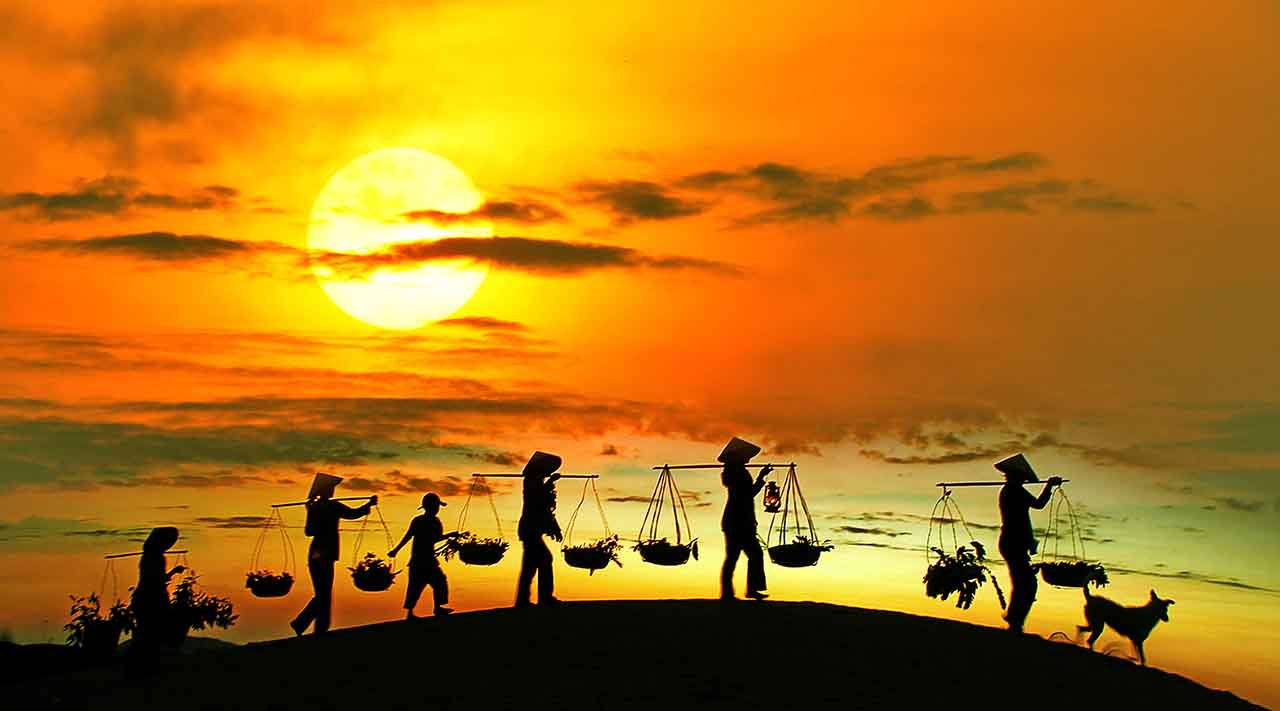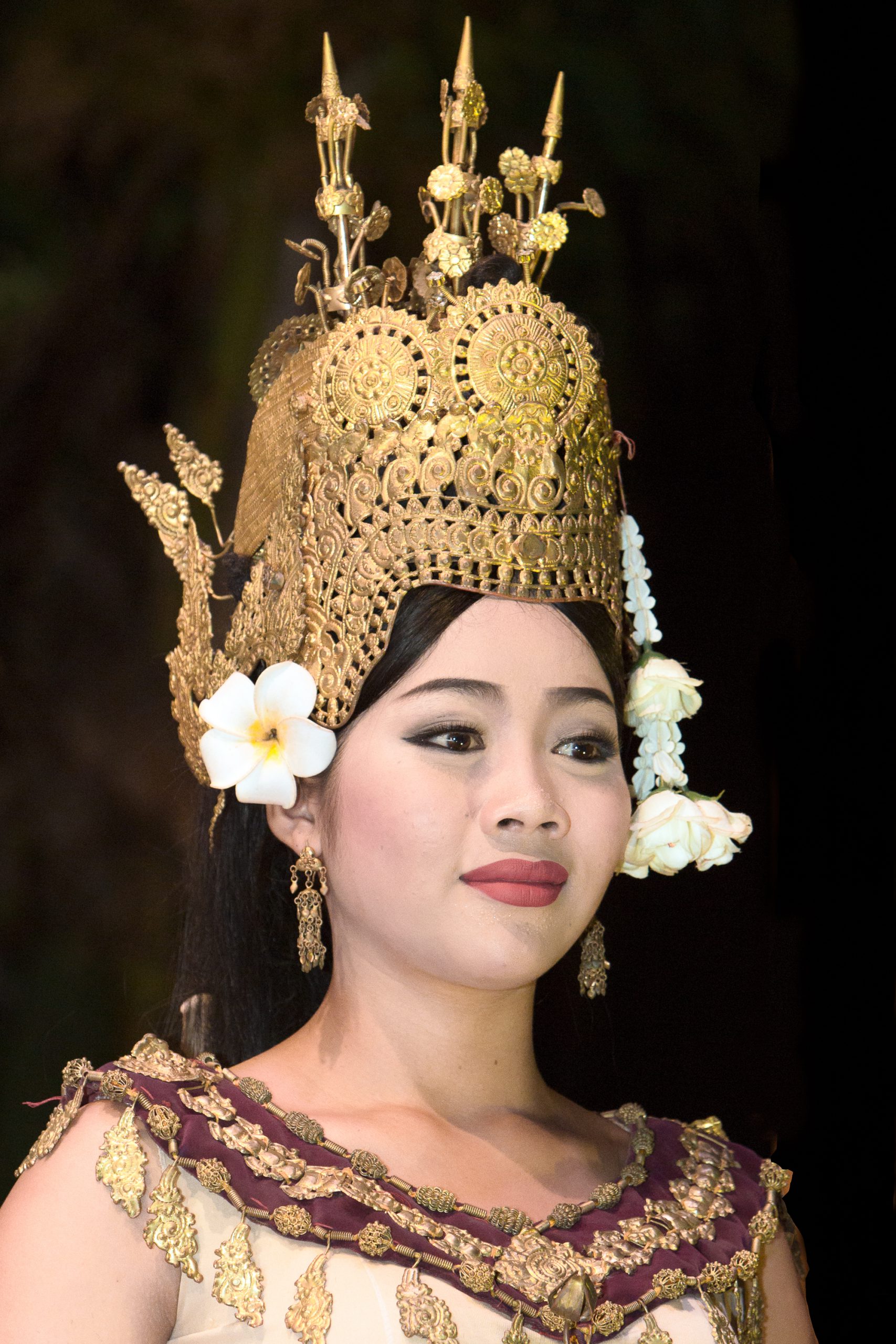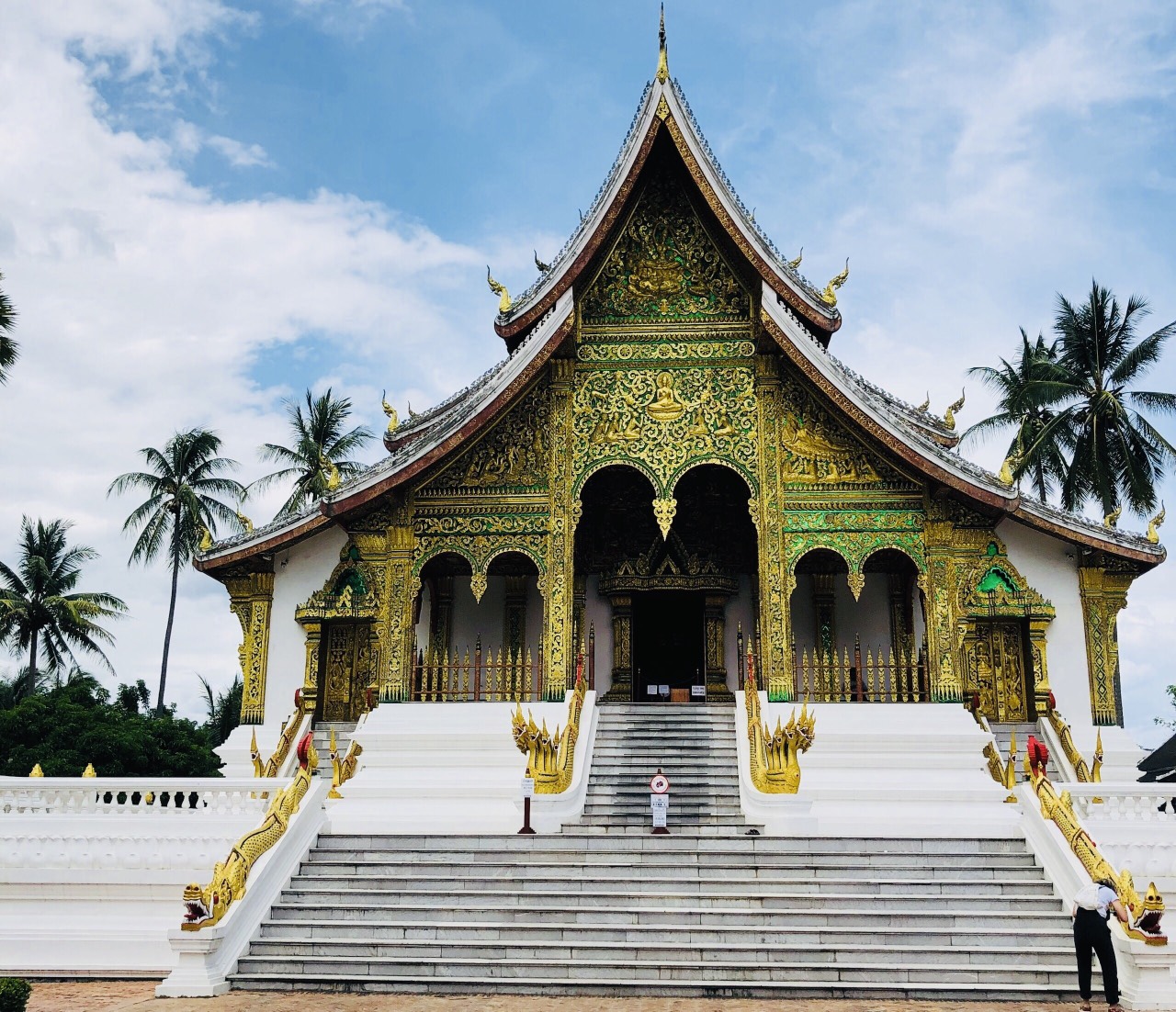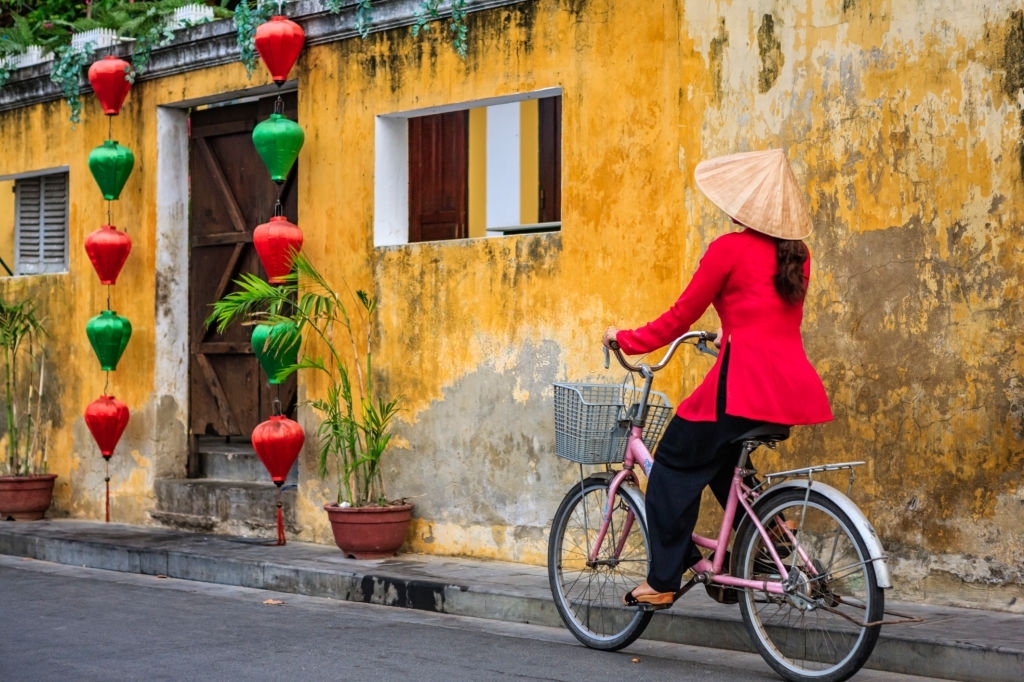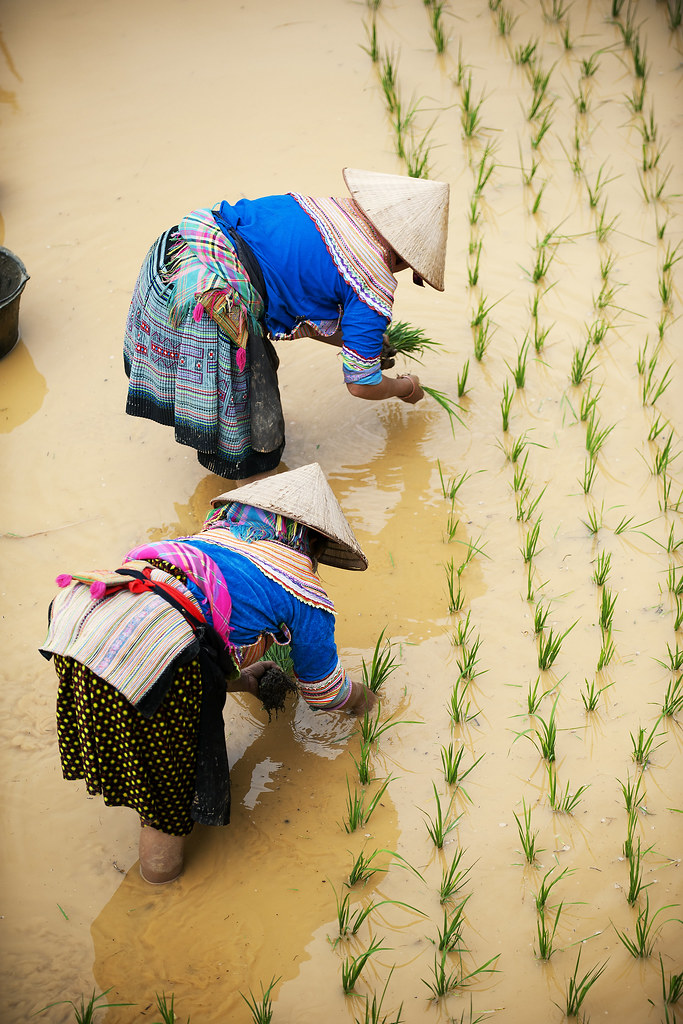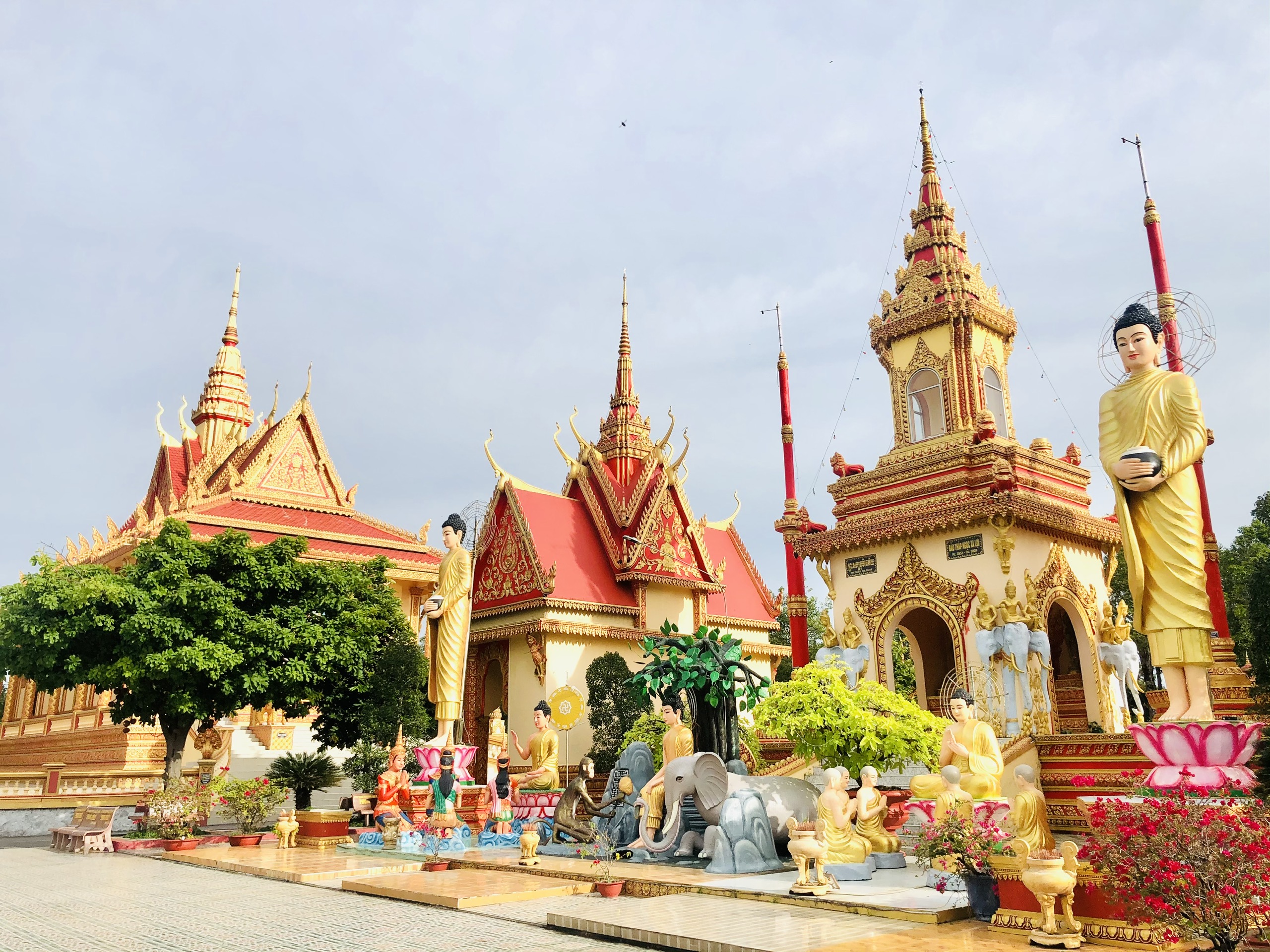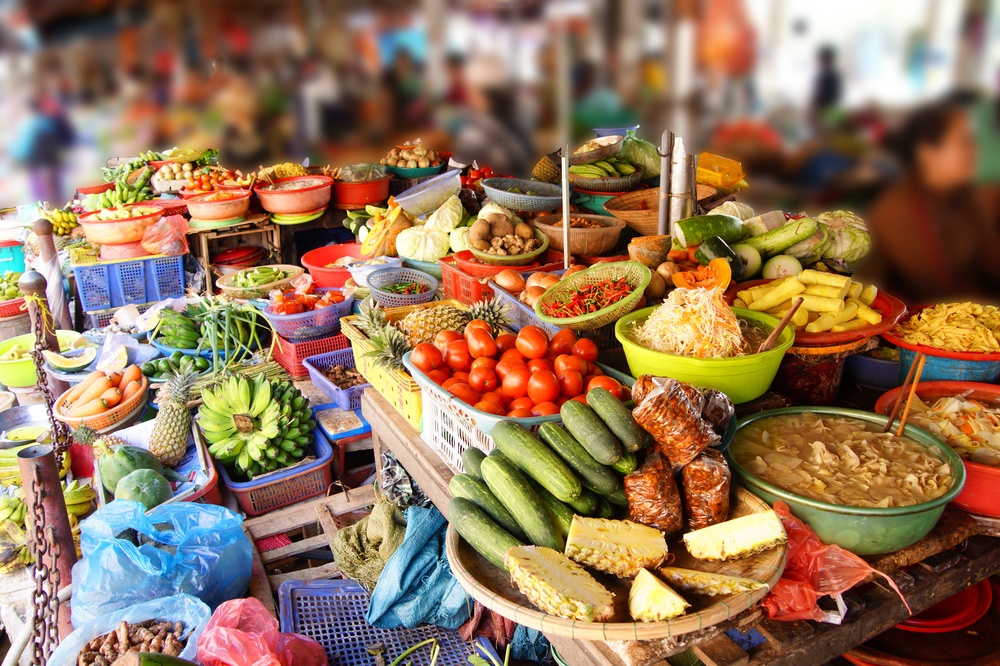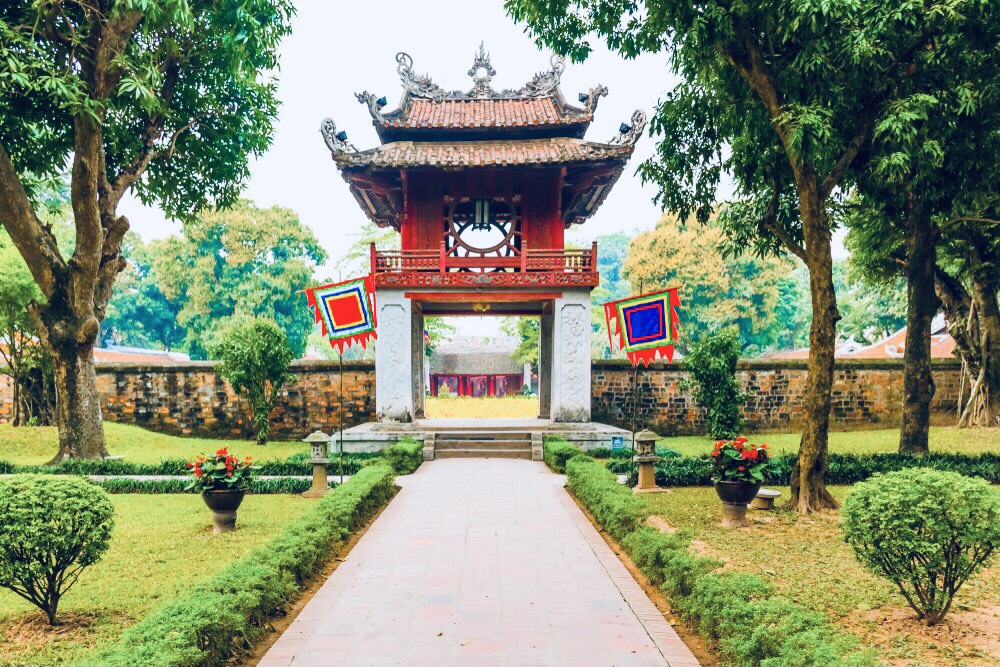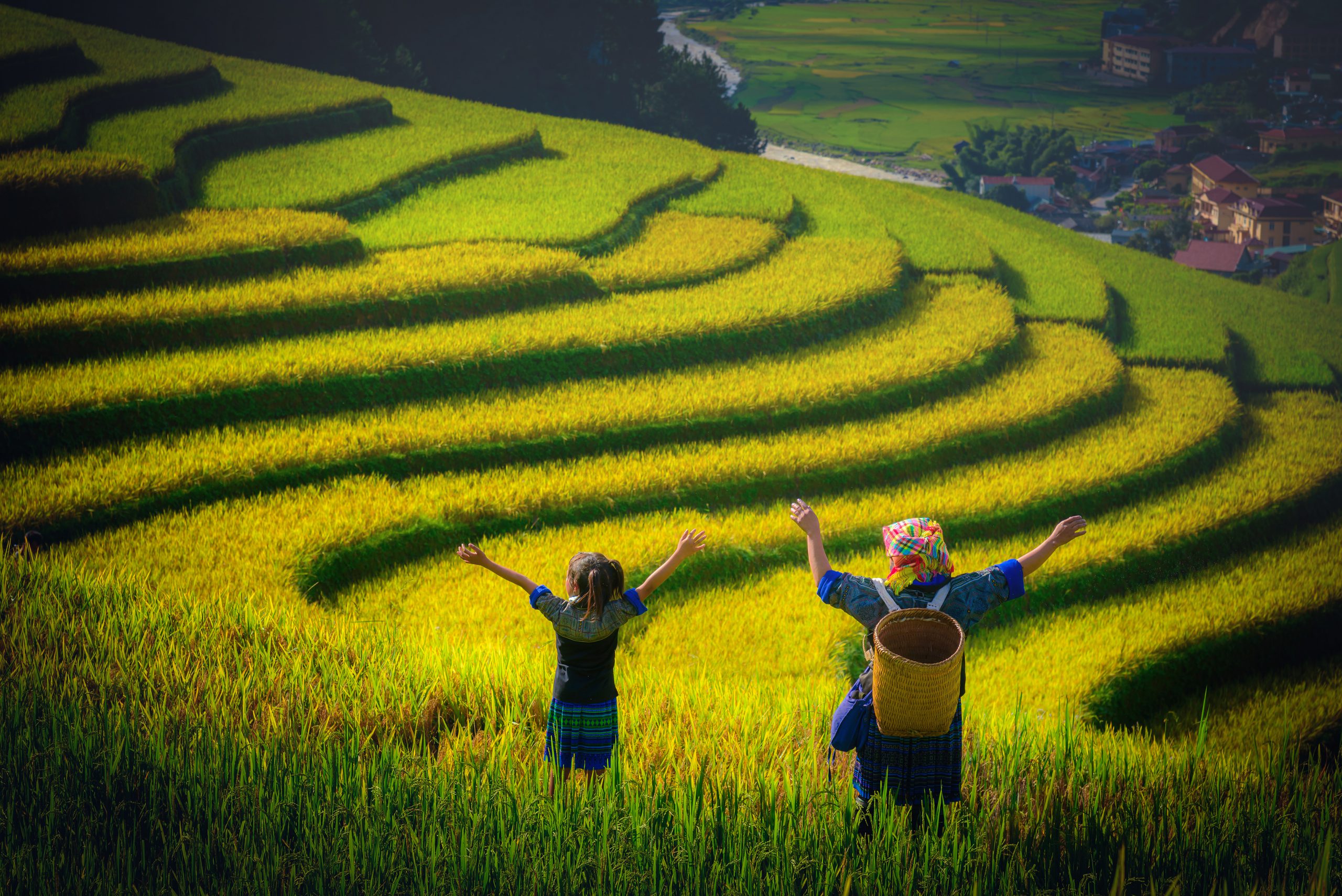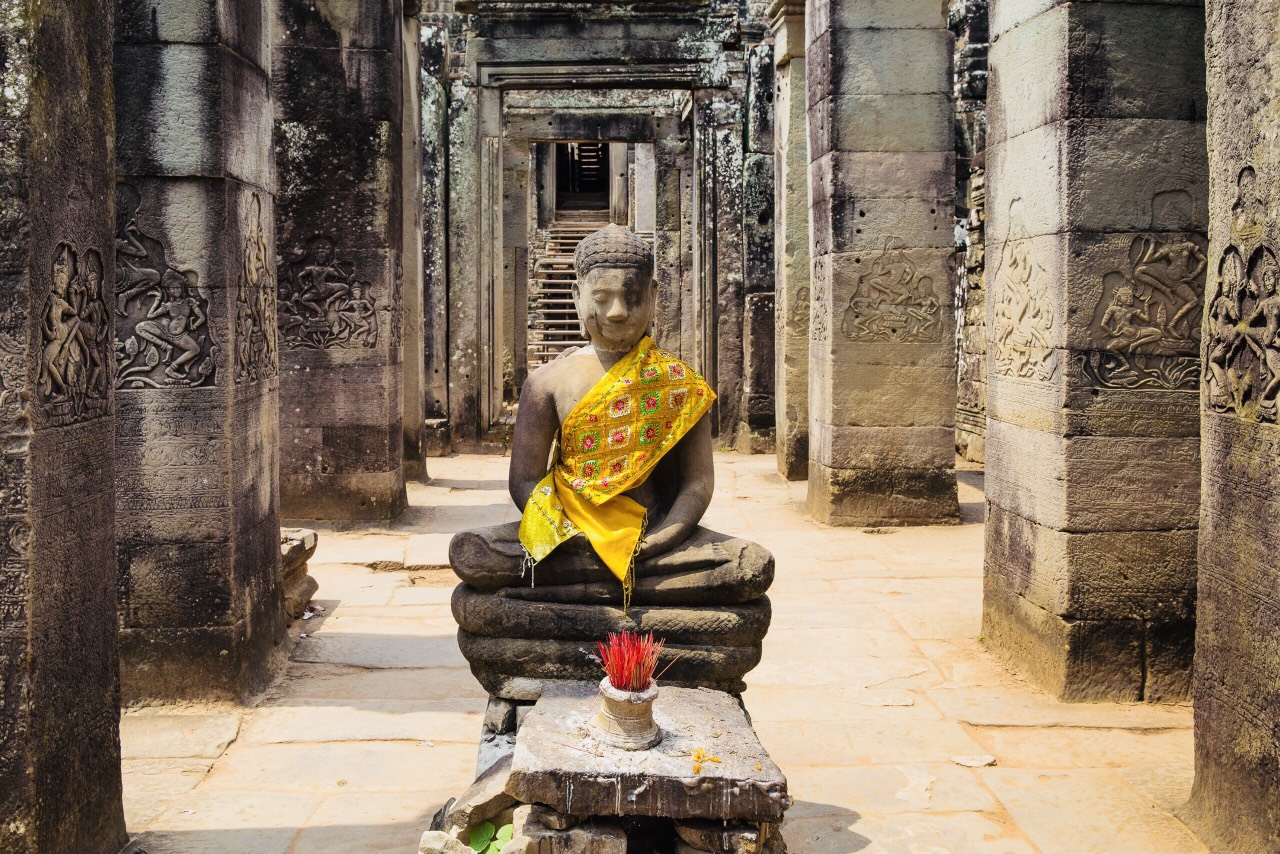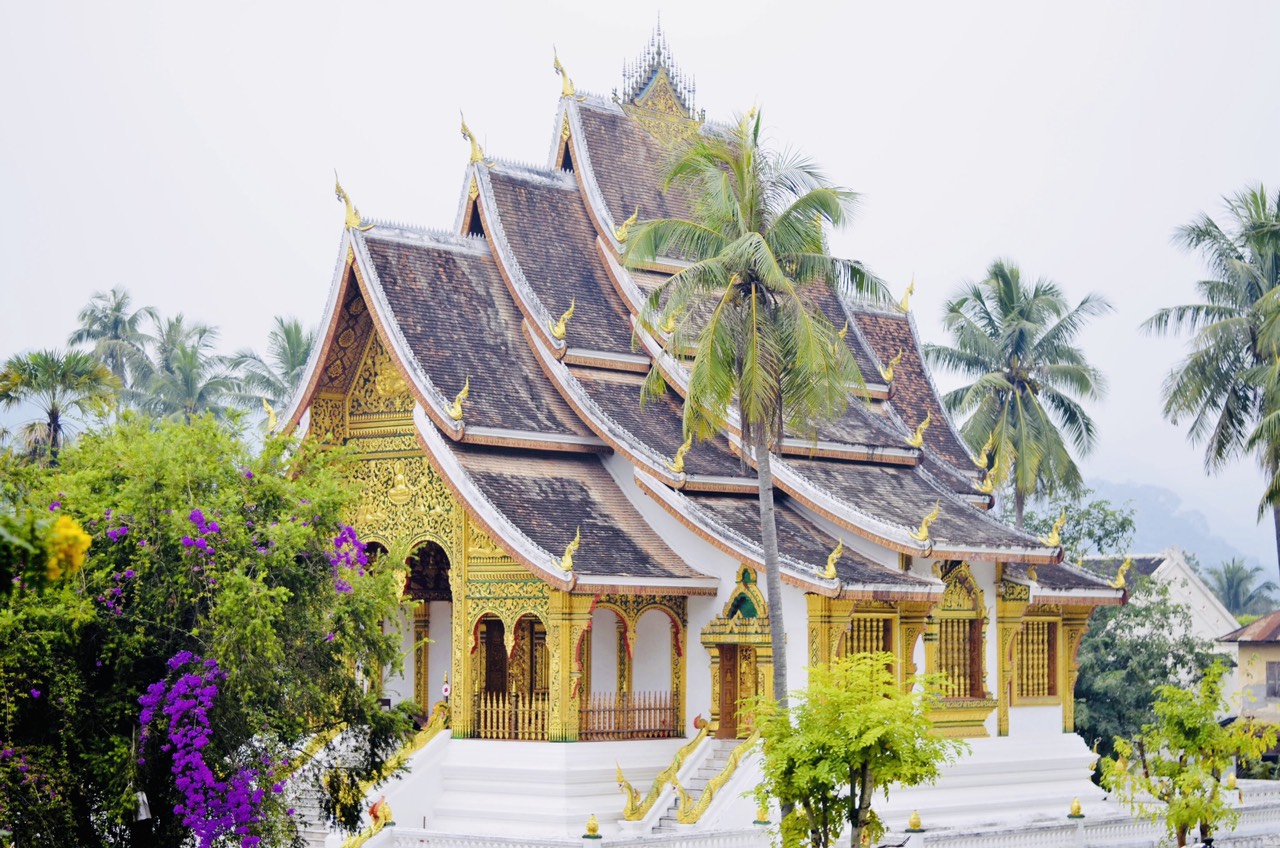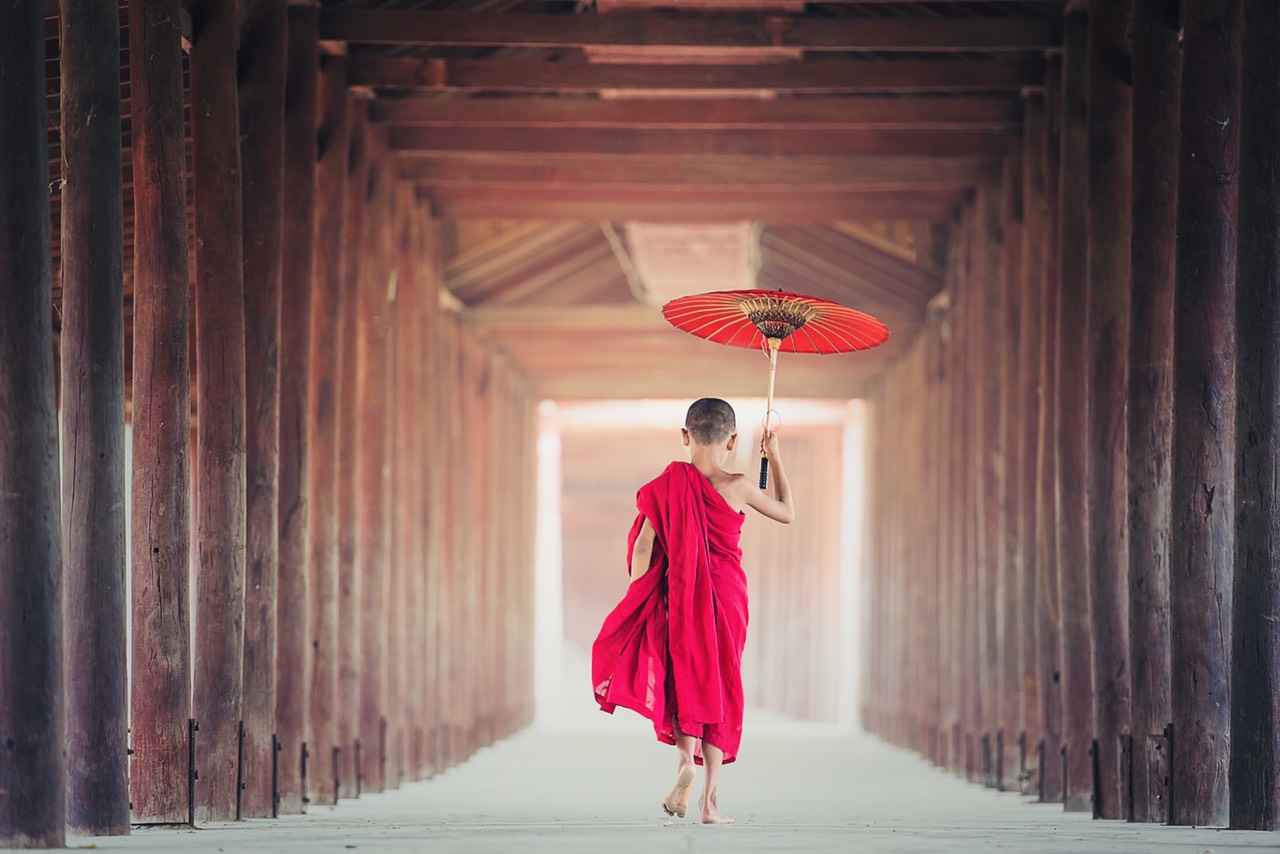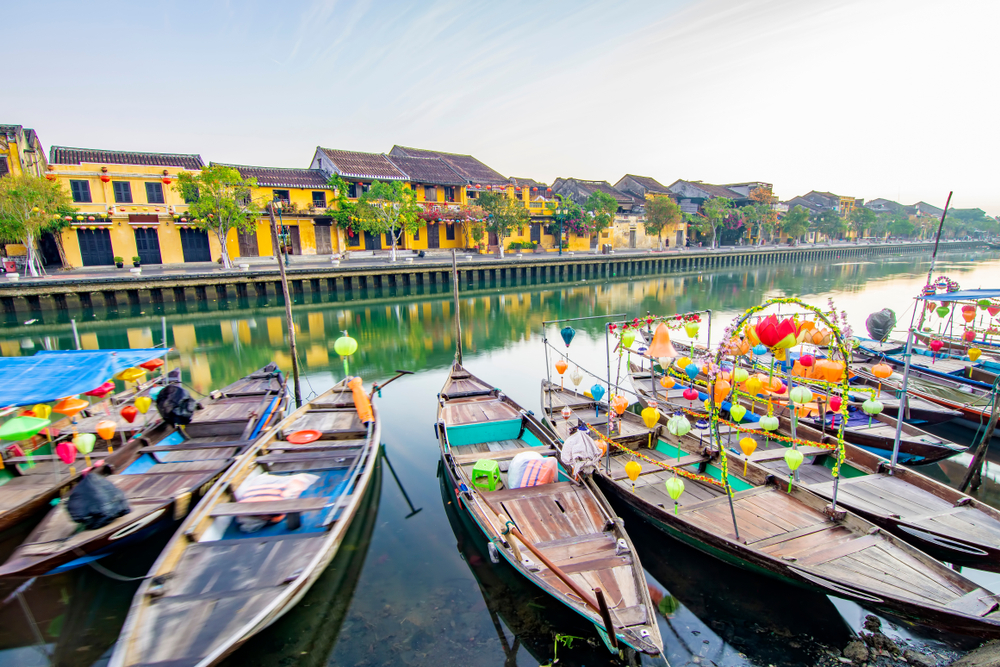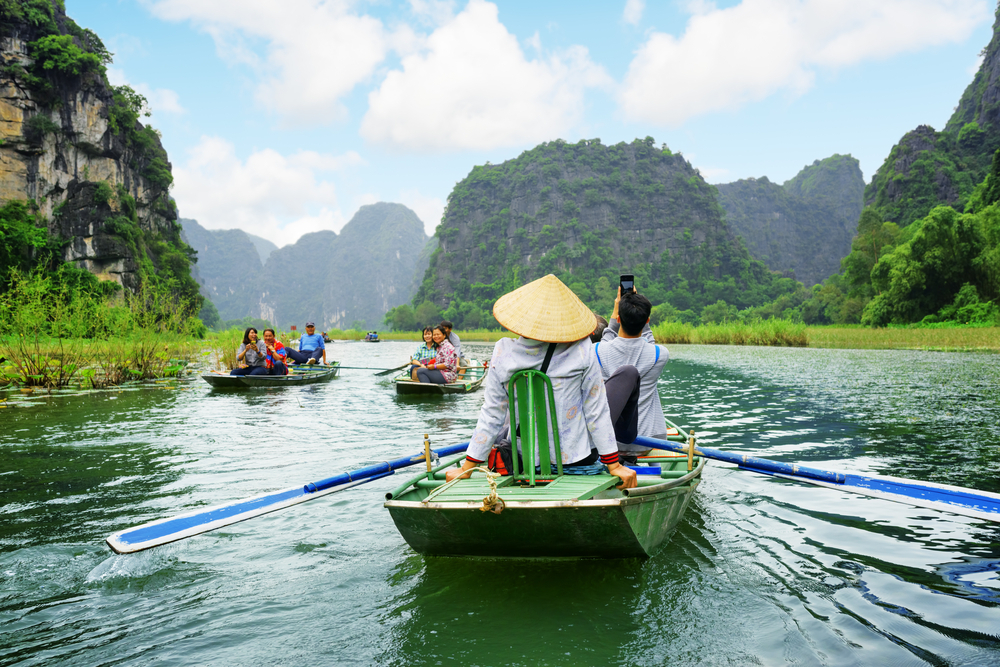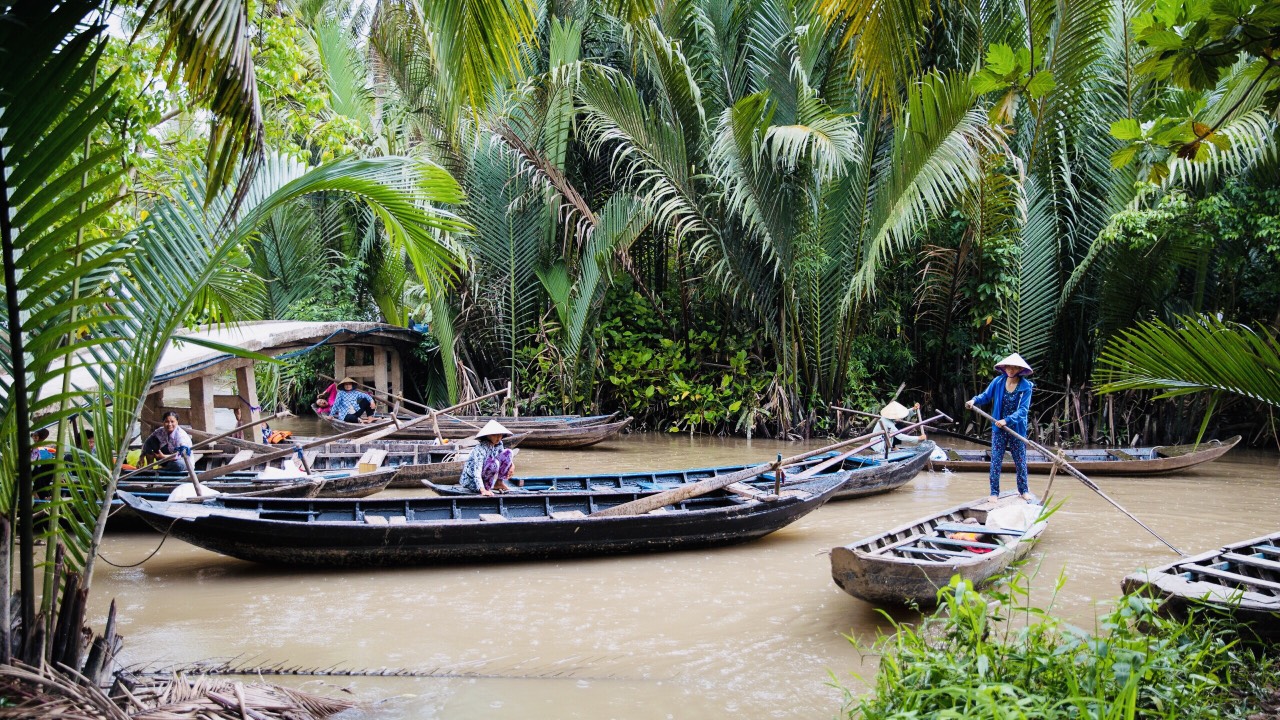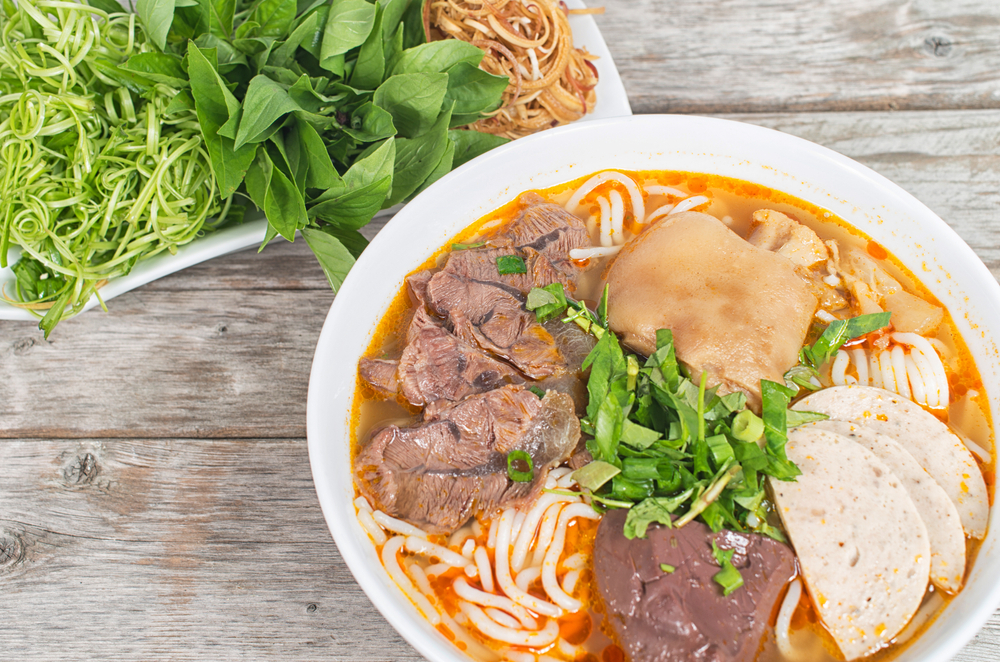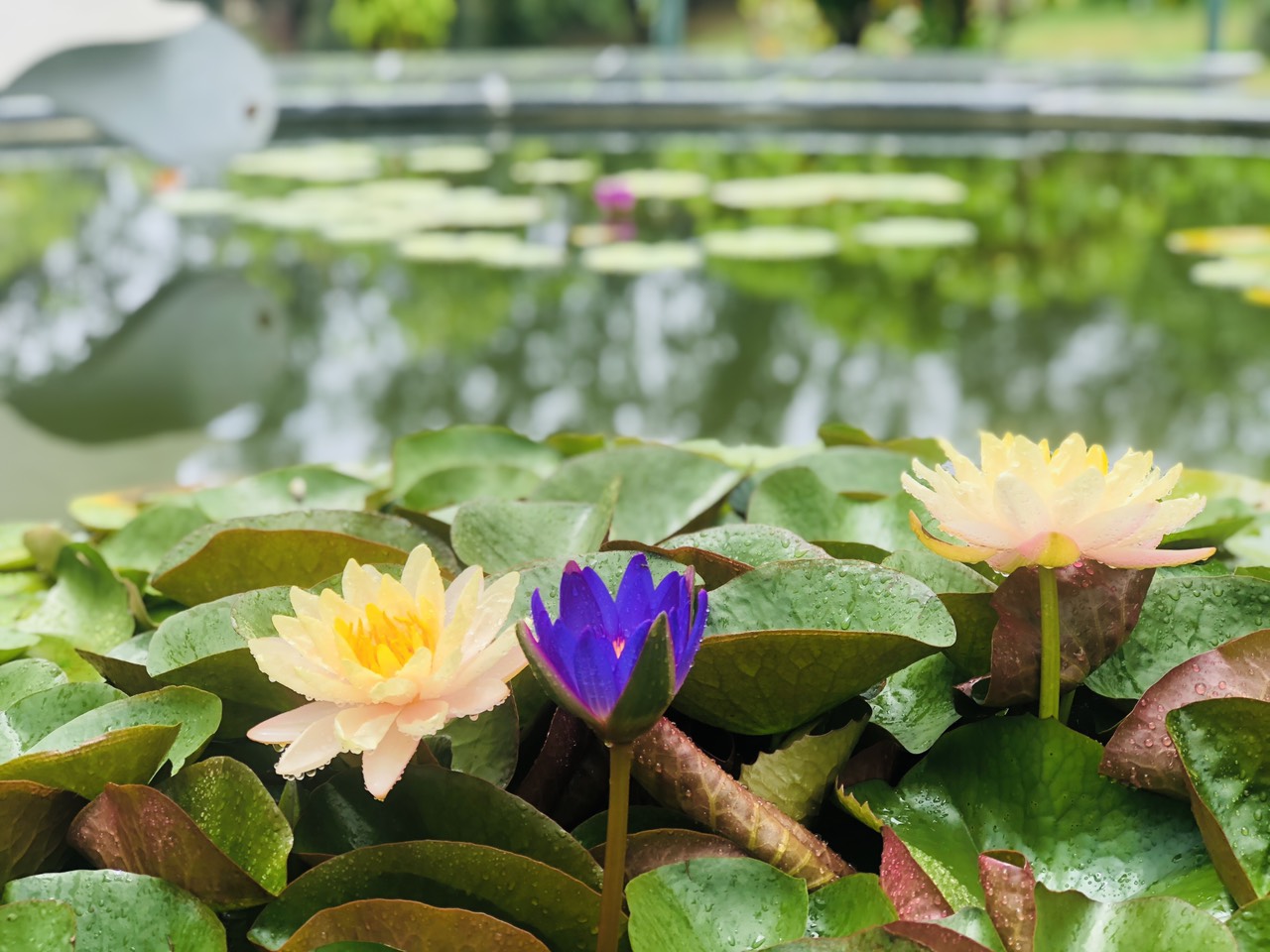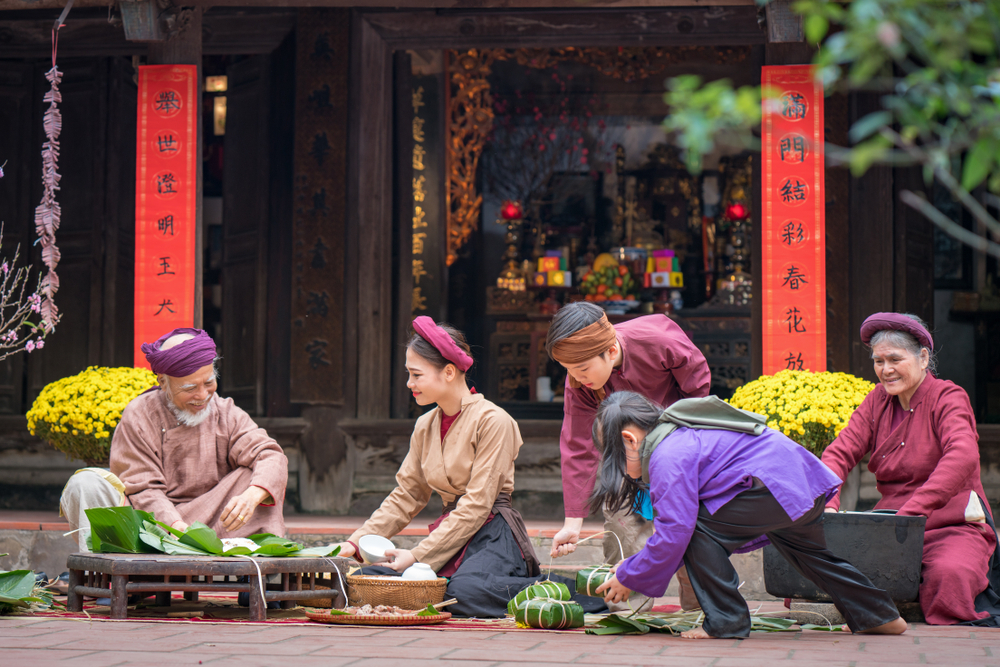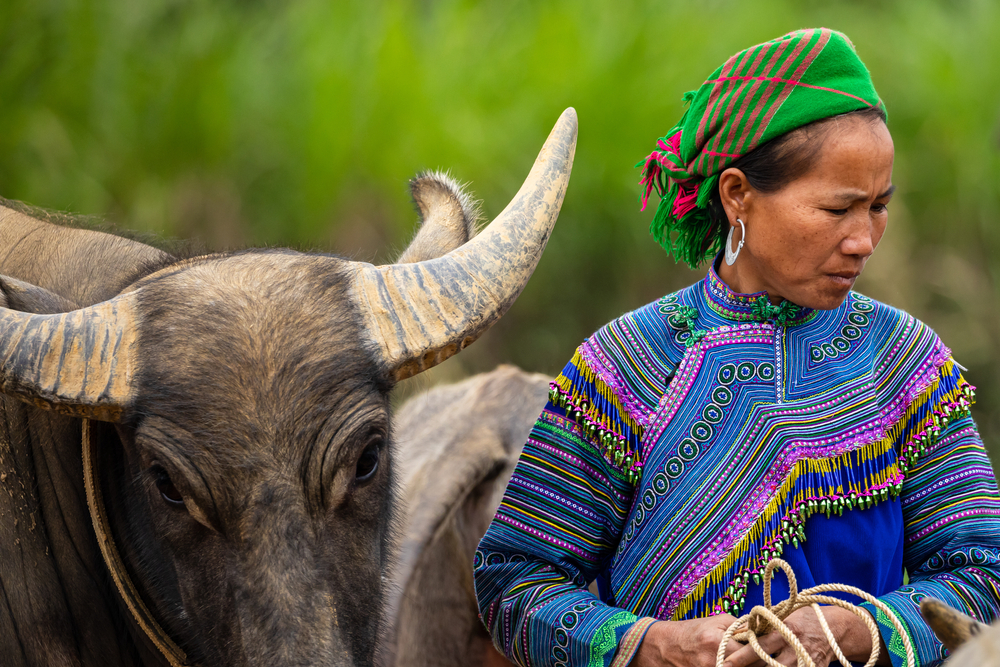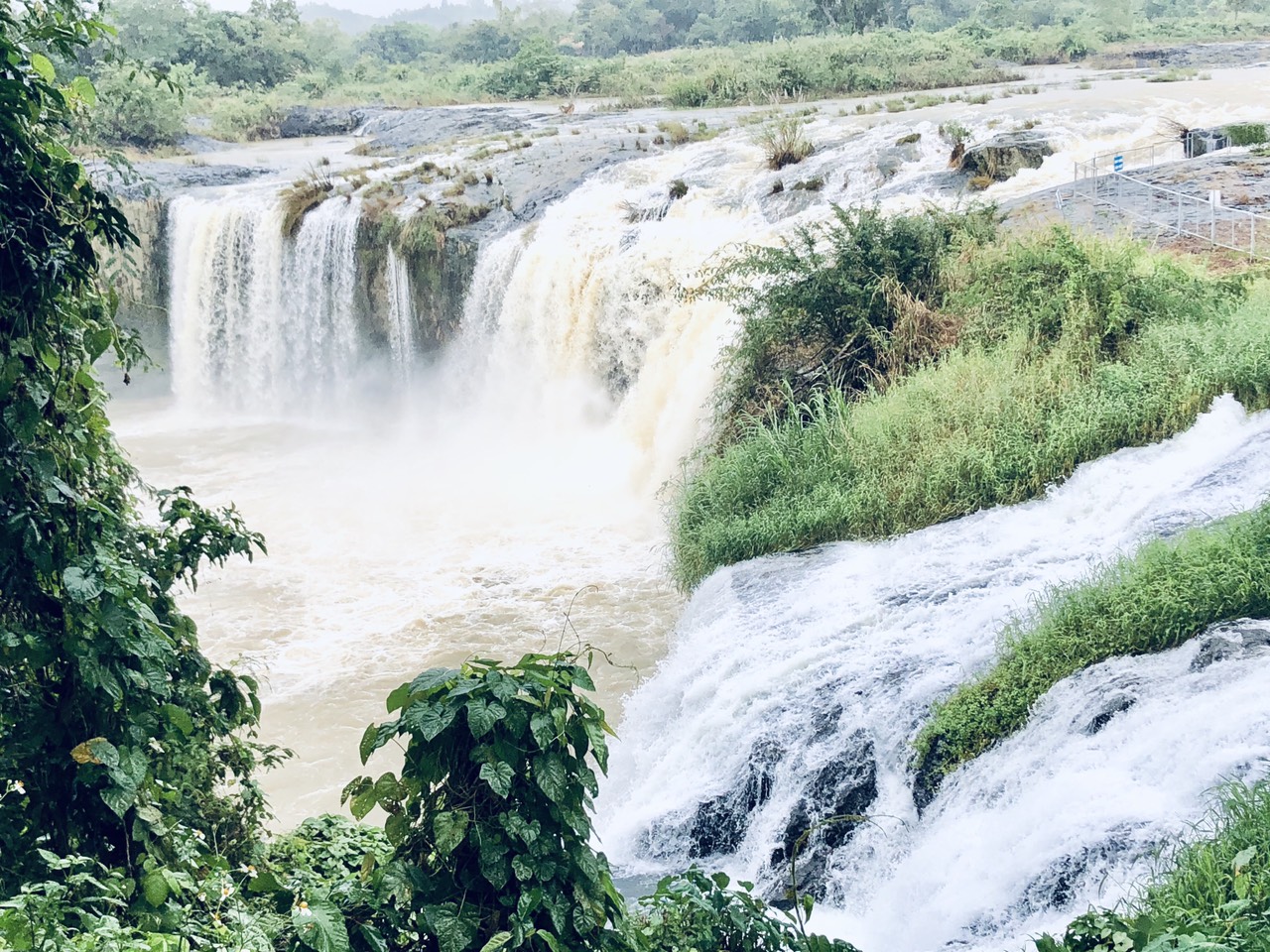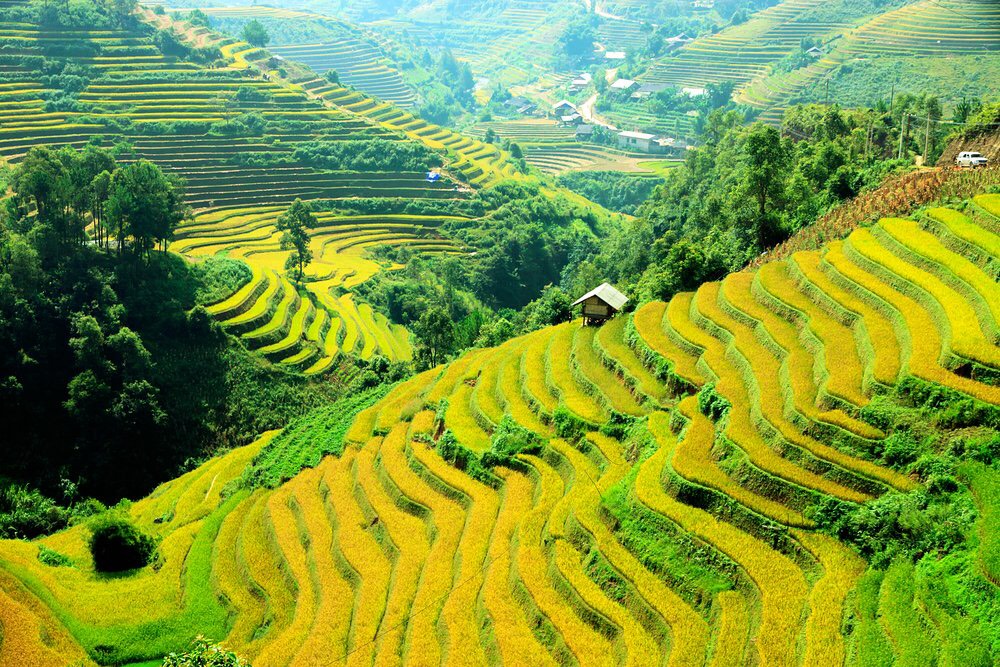
The Mekong Delta
The Mekong River
The Mekong River, about 5,000 km long, originates in the province of Qinghai in the Himalayan heights, then irrigates the autonomous region of Tibet, then the province of Yunnan.
It forms the border between Burma and Laos and then joins its tributary the Ruak at the level of the Golden Triangle (Thailand, Burma, Laos).
It then crosses the Emerald Triangle on the borders of Laos, Thailand and Cambodia where the first arms of its delta are formed.
It is in the south of Viet Nam that it spreads out in a delta of nine arms.
Here, it is traditionally called “River of the Nine Dragons”: Sông Cửu Long.
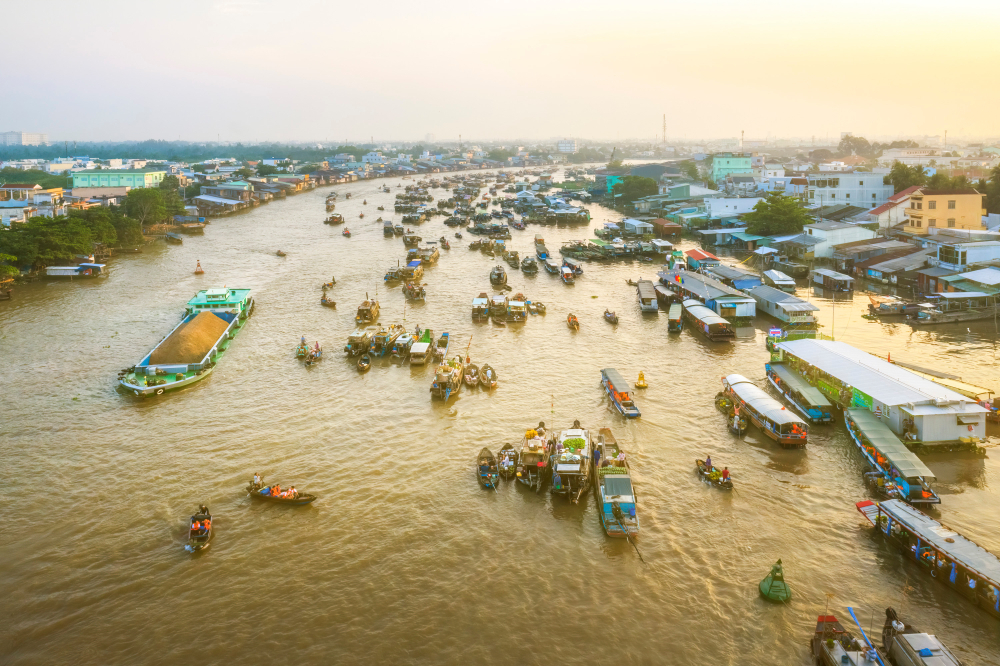
It finally ends its course in the South China Sea.
The Mekong River crosses 6 countries: China (Tibet Autonomous Region), Burma (Myanmar), Laos, Thailand, Cambodia and Vietnam.
Last great sacred monster of Asia, the Mekong is quiet or devastating…
This powerful river ruler forms a kingdom of its own, its waters govern nature and men.
Faced with the ecological problems caused by the recent hydroelectric exploitation, pollution and climate change, the Mekong is no longer a long quiet river, it is a river on borrowed time.
Le delta du Mékong
It is the Vietnamese part of this river, here it stretches sometimes languidly irrigating the south.
The river weaves here a web of rivers, tributaries, canals, arroyos, that we go through, in boats, in barges, in boats basket (ghe thung chai).
Twice a day, the tides penetrate inland, bringing seawater fish, but also sea salt (a plague for rice fields).
The men knew how to take advantage of the floods, of the silt generously offered making of the delta the rice granary of Vietnam, the vegetable garden, the fruit tree of the country.
The delta is the perfect communion between sky, earth and water, here everything grows without rules, in abundance, you only have to bend down or reach out!
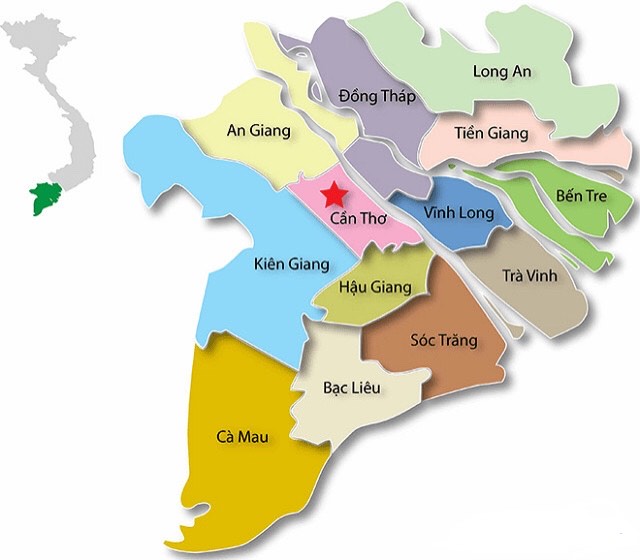
Along the small one-storey houses that border the sprawling canals, the Vietnamese have lovingly planted fruit trees, multicolored flowers.
And, they planted rice on the rest of this fertile land!
Rice fields are everywhere in this beautiful patchwork!
The delta is divided into 13 administrative units including :
1 city directly under the central government: Can Tho
12 provinces : Long An, Dong Thap, An Giang, Tien Giang, Ben Tre, Vinh Long, Tra Vinh, Hau Giang, Kien Giang, Soc Trang, Bac Lieu et Ca Mau.
- Can Tho
Located on the banks of the Hau River (Bassac), the largest city of the Mekong Delta, is resolutely turned towards river and commercial activities, as well as rice growing.

Can Tho is a destination to discover the local life on the river arms, the floating markets, the villages and the beautiful countryside.
There are three floating markets in the area :
– The floating market of Cai Rang is the most important wholesale market.
– The floating market of Phong Dien at about 20 km from Can Tho, one of the most authentic markets of the delta.
– The floating market of Phung Hiep, located at 30km of Can Tho, it is a typical market of the delta, one sells there also snakes…
– Can Tho is also rich in local handicrafts, making rice leaves and noodles, coconut sweets, wooden objects, basketry, pottery etc.
– A visit of the arroyos is essential, we let ourselves slide on small rowing boats along the water under a cover of vegetation…
- An Giang
Border region with Cambodia, land of both plains and hills, the mysterious That Son mountain range, many historical and cultural relics.
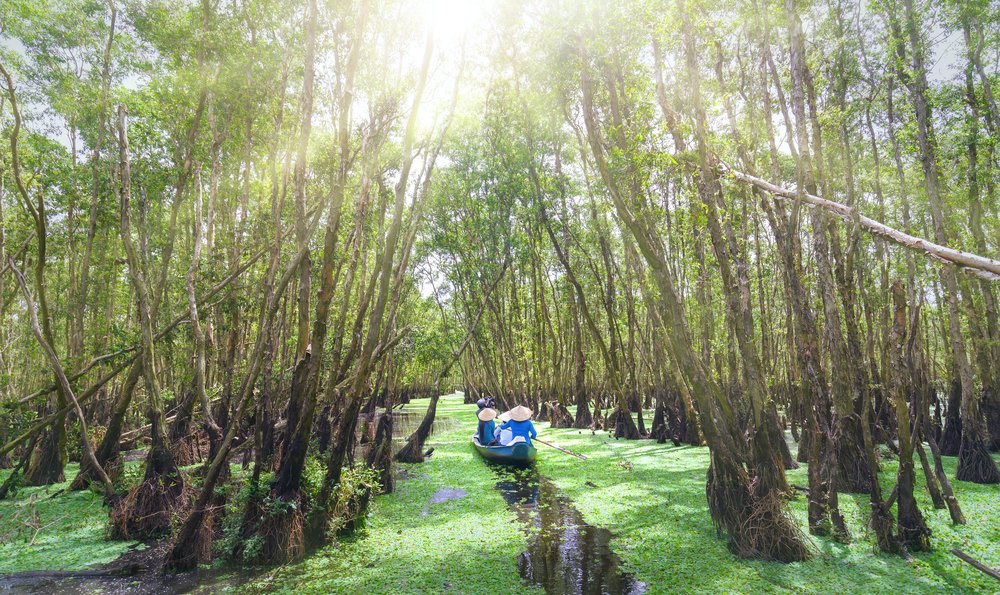
An Giang impresses with the beauty of the Tiền River (northern branch of the Mekong River), where many unique cultures of the Kinh, Khmer, Cham and Chinese communities mix and converge.
– Long Xuyen – The floating market of Long Xuyen is authentic, it takes place from 6 to 9 a.m., on the Hau River (Mekong tributary), hundreds of boats are loaded with products such as vegetables, sugar cane, fishing products and especially several kinds of tropical fruits.
– Chau Doc – Bordering Cambodia, at the intersection of the Hau and Tien rivers, it is a cultural mosaic of Vietnamese Islamic, Cham, Hindu, Khmer and animist traditions.
– Sam Mountain is a famous destination, covered with trees it is the gathering place of a whole system of ancient temples and pagodas and caves, creating a beautiful landscape among the rich plains.
– The mangroves of Tra Su – The typical submerged forest of the Southwest has a very important effect on the aquatic environment and climate regulation for the whole region.
Each coming spring is accompanied by the white blossoming of melaleuca trees, a typical tree of this known land, a “submerged green paradise” of Vietnam.
The melaleuca forest of Trà Su is also the habitat of many species of animals and plants.
- Dong Thap
– The flower garden of Sa Dec has become, thanks to the skillful hands of many generations of craftsmen, a destination with unique nuances.
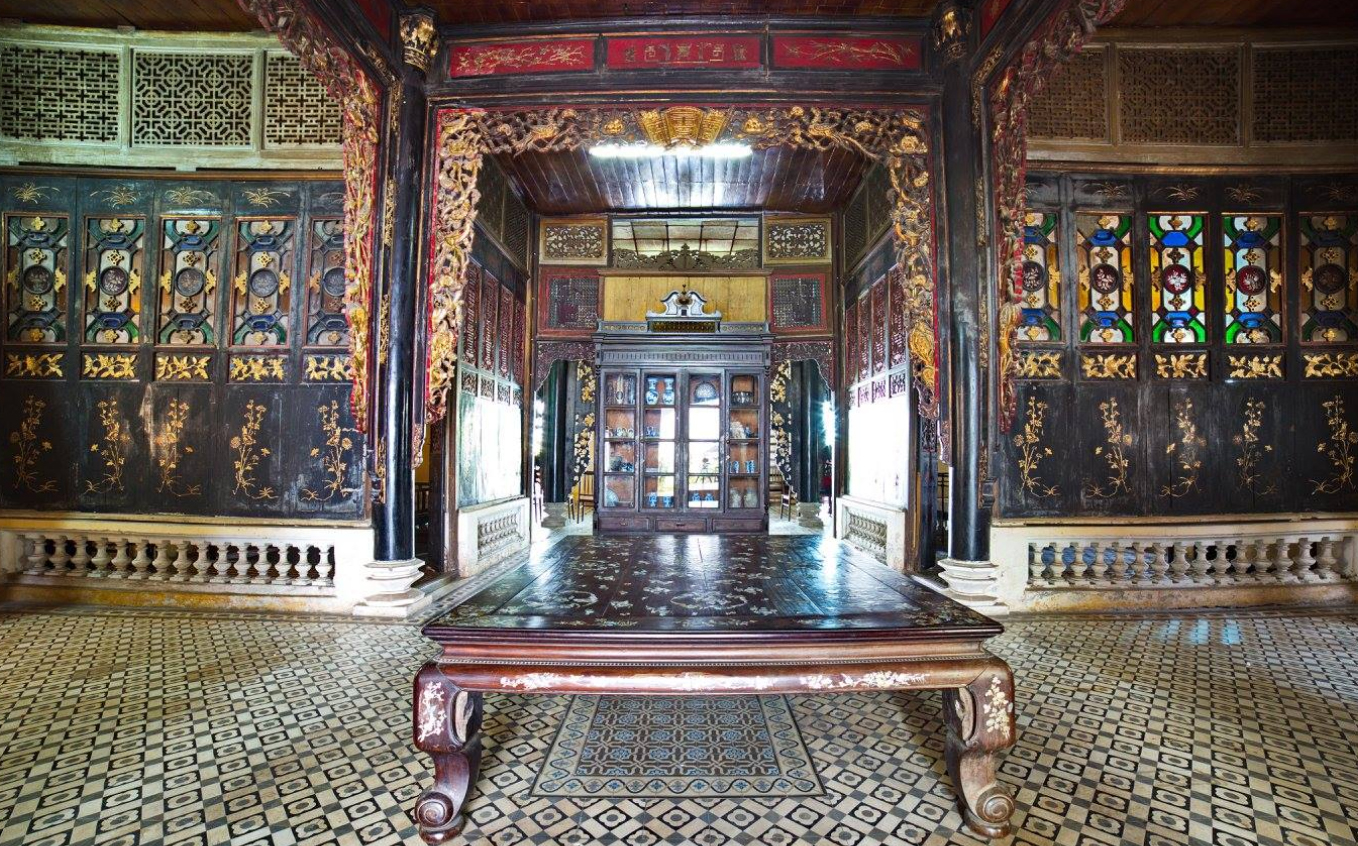
– Gao Giong is the habitat of 15 species of waterfowl, the most numerous of which are the white storks with tens of thousands of birds.
– Streetcar Chim National Park, a natural area of 7612 ha, spread over 5 municipalities, is a beautiful natural landscape and an extremely rich ecosystem of 130 different species of plants, hundreds of species of vertebrates, dozens of species of fish and 231 species of aquatic birds, 16 of which are rare (such as the Saru crane), nesting there.
National Park of the Plain of rushes created to restore a degraded wetland to protect its rare birds. To be visited at high water from September to December.
– The Old House of Huynh Thuy Le, a harmonious combination of Eastern and Western architecture, associated with a love story without borders between Marguerite Duras and a Vietnamese-Chinese.
The old house was built in 1895 by Mr. Huynh Cam Thuan, a famous rich Chinese merchant (father of Huynh Thuy Le).
- Long An
– Lang Sen, is considered a special site of the Plain of rushes.
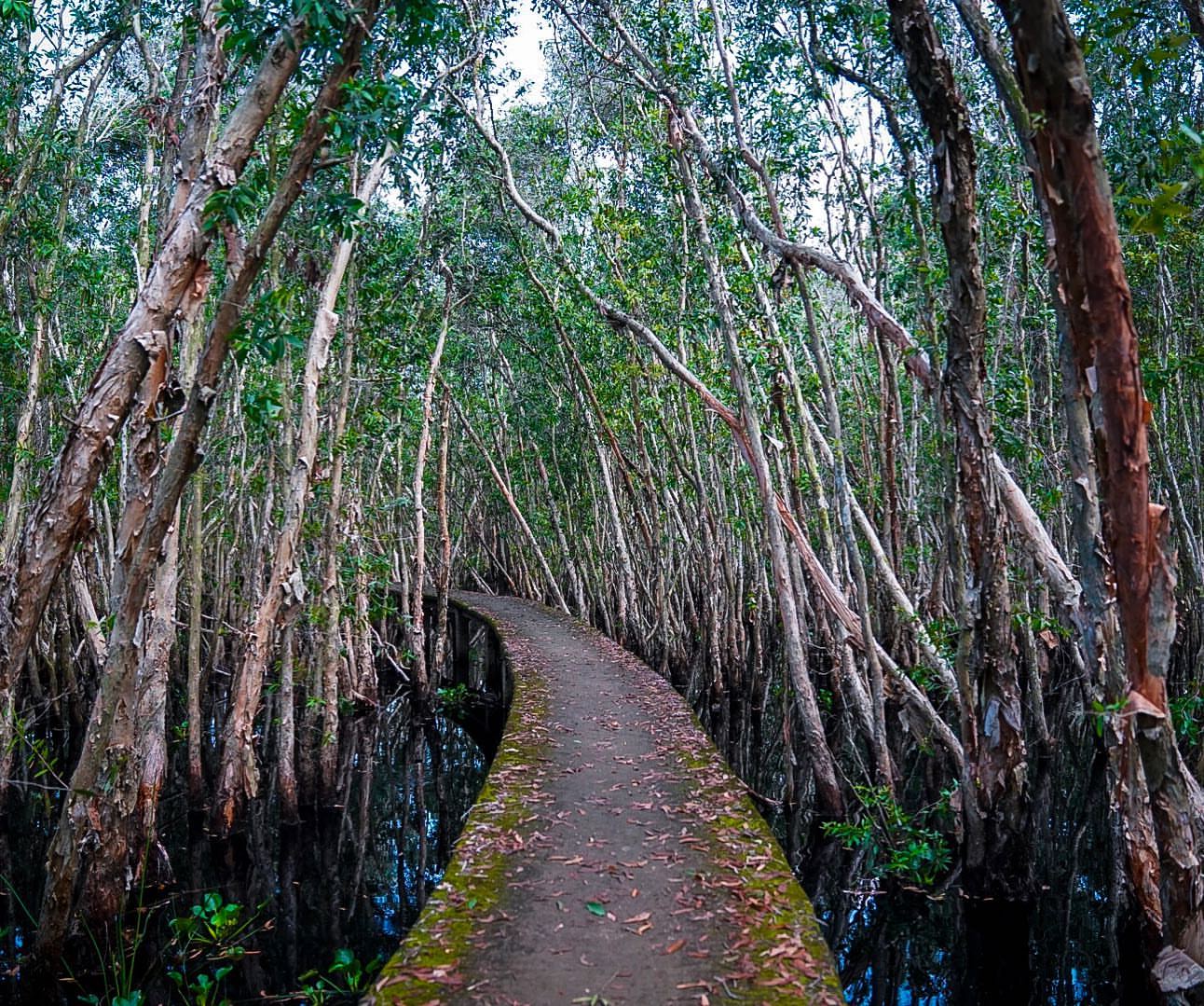
This wetland reserve has a rich population of wild animals and plants, including species listed in the Vietnam Red Book. There are 112 species of birds, 149 species of animals.
Here, lotus fields cover an area of up to 50 hectares.
– Tan Lap, these are vast forests of melaleuca cajeput (in medicine, its oil is used for its antimicrobial properties in internal use and in massage against rheumatic pains, it is a constituent of the red tiger balm).
– The Hundred Columns House is built on the left bank of the Vàm Co Dông River in the commune of Long Huu Dông. The Hundred Columns House is typical of the traditional “ruong” house of Hue (garden house with precious wood architecture such as ebony, rosewood). It has been classified as a National Historic Monument since 1997.
- Tien Giang
– My Tho, Cai Be and its floating market.
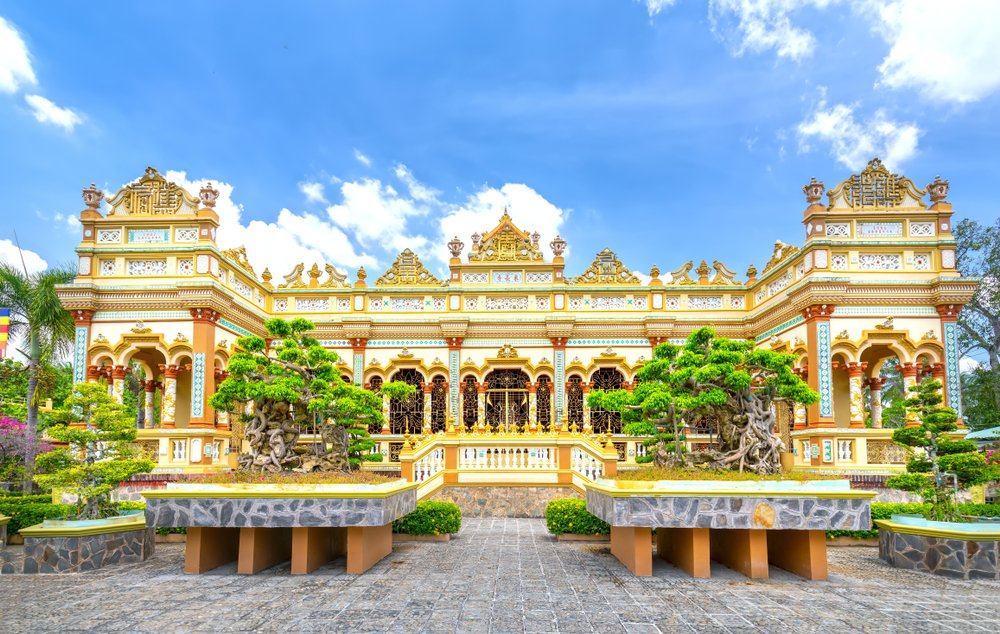
The Cai Be floating retail and wholesale market is located at the confluence of the Cai Be River and the Tien River, it extends over 500m.
More than 400 boats exchange their goods every day between 4 am and 3 pm. On each boat there is a bamboo pole on which one or more of the items people are selling are hung.
Some bring their products in bulk and then buy what they need for their daily needs or for resale in remote villages.
Close to Saigon it is a market quite frequented by tourists.
– The site of Xeo Quyt, vestiges of the last Vietnam war in the heart of a maze of arroyos caught in the vegetation that history lovers will be curious to discover.
– Tan Phong islet, is known for its nice orchards producing big and sweet rambutans.
On the islands you have your feet in the water, your head in the fruit trees.
As soon as we disembark we drive on narrow roads shaded by banana trees, coconut trees, mango trees, jackfruit trees, lemon trees, tamarind trees.
– Tan Than, a black sand beach, famous for its large number of clams to eat without moderation!
- Ben Tre
Thousands of coconut and palm trees with the Mekong River in the background.
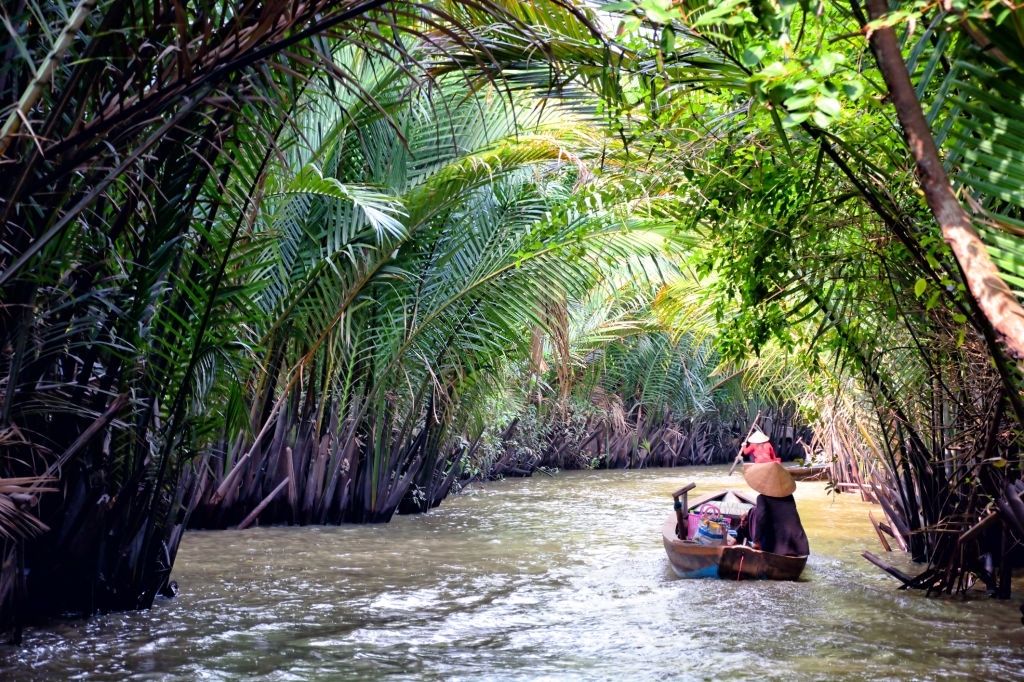
– These lush orchards, which cover nearly 41 thousand hectares, produce some thousands of tons of coconuts each year.
In Ben Tre, the coconut palm deserves its name of “tree of a hundred uses”.
Its roots have medicinal properties, its trunk is used to make frameworks, its leaves are used to make mats, bags and hats, and its bud is eaten fresh or cooked.
On the Mekong River you can see the big barges loaded with nuts for the wholesale market of Cai Be.
– Con Phung was originally just a floating island in the middle of the Tien River but due to the abundant alluvial deposits it now covers more than 50 hectares.
The landscape of Con Phung is peaceful, poetic, what could be more pleasant than a ride in a horse-drawn carriage on the road of the villages lined with coconut trees, to drink tea with honey, to taste tropical fruits, to listen to Don ca tai tu (traditional music of the south), and especially to go canoeing on the small canals flanked by Nipa palms (palms of the mangroves).
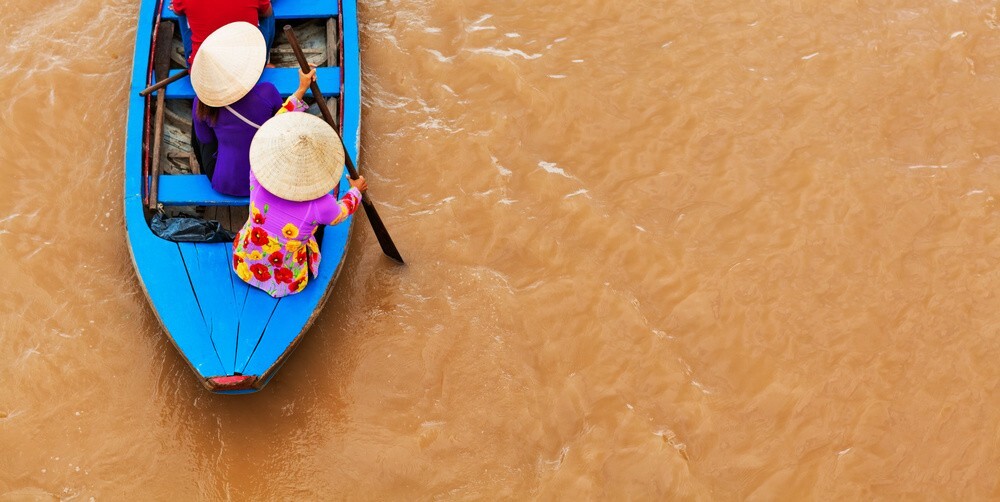
– In Con Quy, a small island, you will live in a peaceful space, there has been no trace of urbanization, the climate is extremely mild.
– The Vam Ho bird garden, along the Ba Lai river, in the direction of My Hoa, the banks disappear under the guava trees, coconut trees, and other fruit trees.
At the entrance to the park, mangroves, date palms and water bindweed predominate. From October to April, the birds start to gather to breed.
– In Ba Tri we leave the big coconut trees, here full of small canals lined with Nipa palms, beautiful rice fields and small houses between the two…
- Vinh Long
– The ovens of Mang Thit.
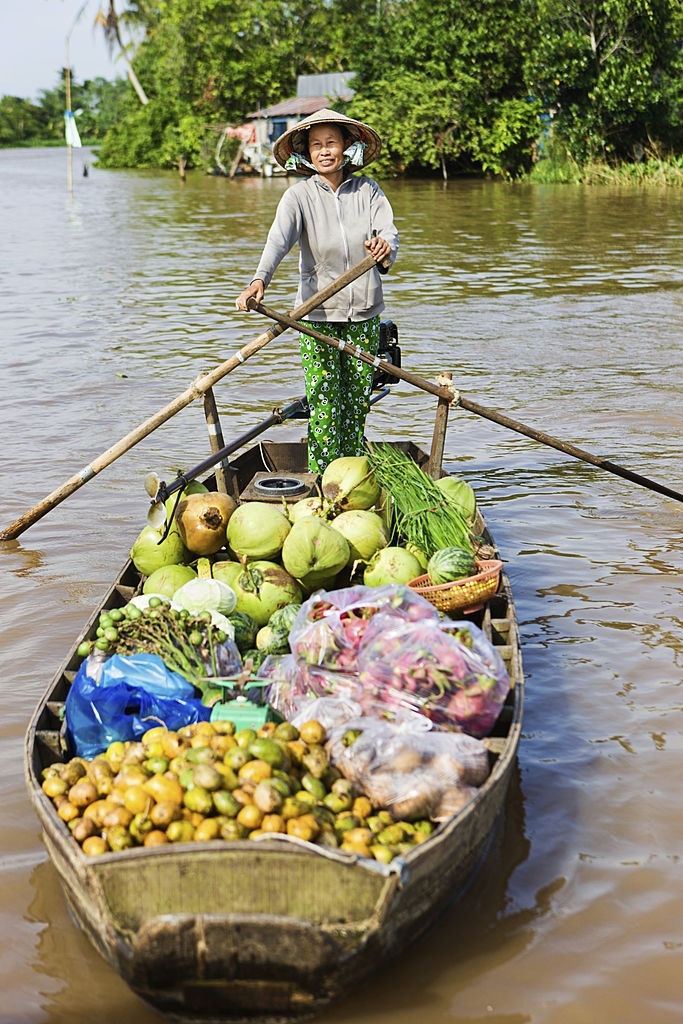
Brick and pottery factories appeared more than a century ago, the bricks and tiles of the region were highly appreciated thanks to the abundant sources of natural and high quality clay offered by the Cô Chiên river.
In the 1980s Mang Thit was at its peak. The whole district had nearly 1,000 production workshops and 3,000 brick kilns, it was called the “Kingdom of brick factories” or the “Red Kingdom”..
In the distance, these ochre-colored structures, like giant beehives, stand out and contrast with the blue sky of this sunny region.
The manufacturing process takes more than a month and goes through several stages. Once the bricks (20 tons) are introduced in the oven (count one week of filling), the closing is carried out at the top before lighting the hearth with rice husk as fuel (the time of cooking will last 25 days).
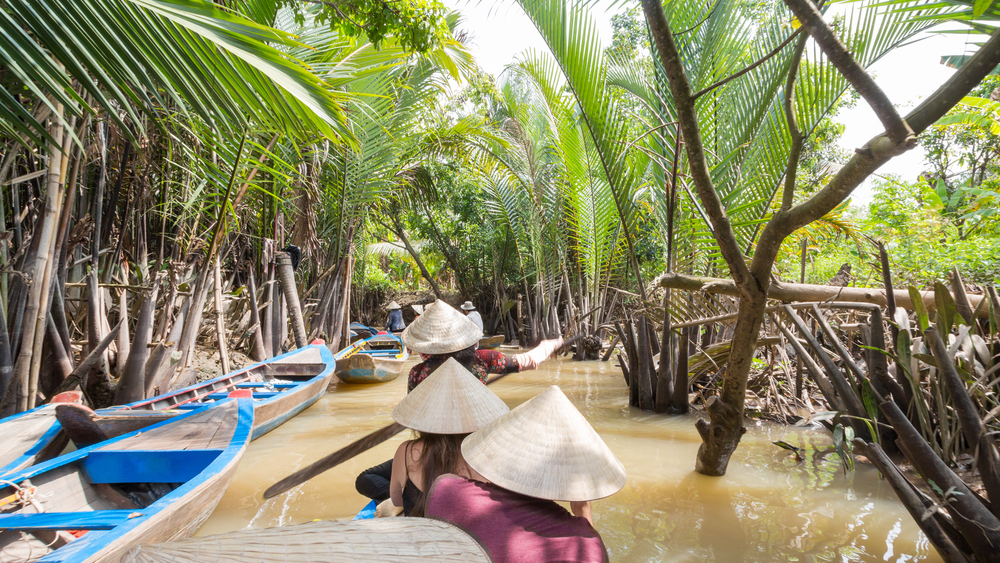
Today, the Provincial Department of Culture, Sports and Tourism, in collaboration with architects and investors, launched the kiln conservation project entitled “Contemporary Heritage of Mang Thit”.
– An Binh Island is the fruit “store” of Vinh Long province !
In An Binh, the rhythm changes, everything becomes slower, we feel good. We just have to enjoy the tropical air, naps in the hammock, listening to the melody of palm leaves.
By staying with the locals for a few days, one could believe that one is part of the village. We end up adopting the local rhythm: wake up at sunrise, lights out around 8pm.
- Tra Vinh
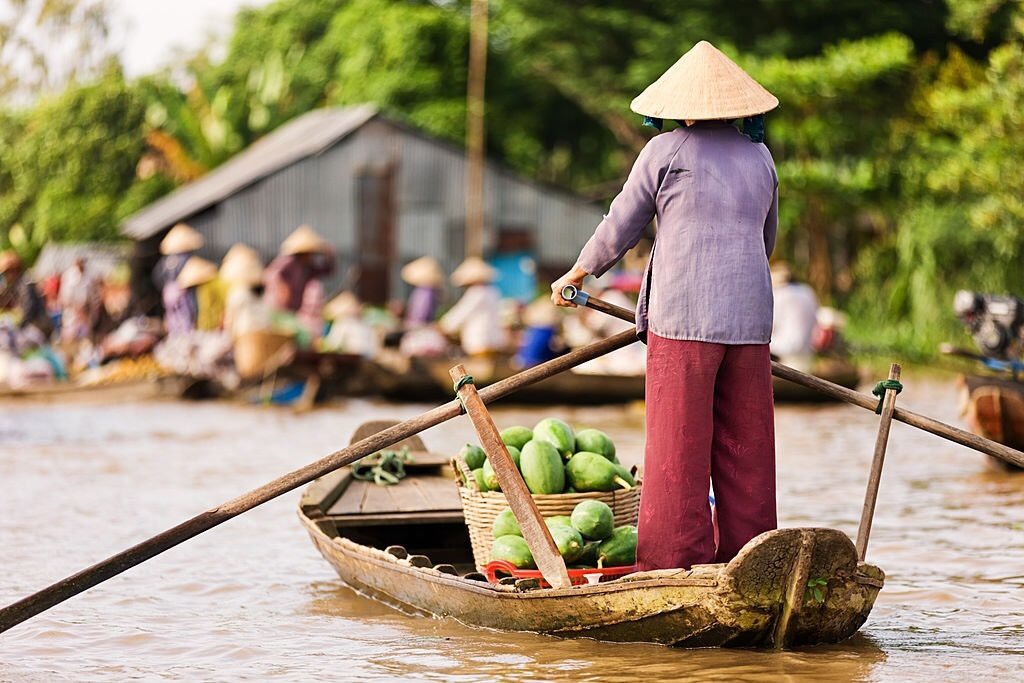
It is a small province which spreads out between the two arms of the Mekong river which grows from year to year thanks to the alluvium which is deposited each year by the river. It is in this province that we find the largest Khmer community of the country.
– One finds here a hundred Khmer pagodas dedicated to the Theravada Buddhist cult.
– The Ok om bok festival, moon worship and prayer for a good harvest is one of the three biggest traditional festivals of the Khmer people in South Vietnam. It takes place at the end of the main harvest, the farmers pay tribute to the moon which guarantees them a plentiful harvest.
- Soc Trang
– The floating market of Nga Nam called candle market, famous night market it starts early, around 3 am to end around 8 am. It is held at the intersection of 5 rivers, it sells everything but especially fruits.
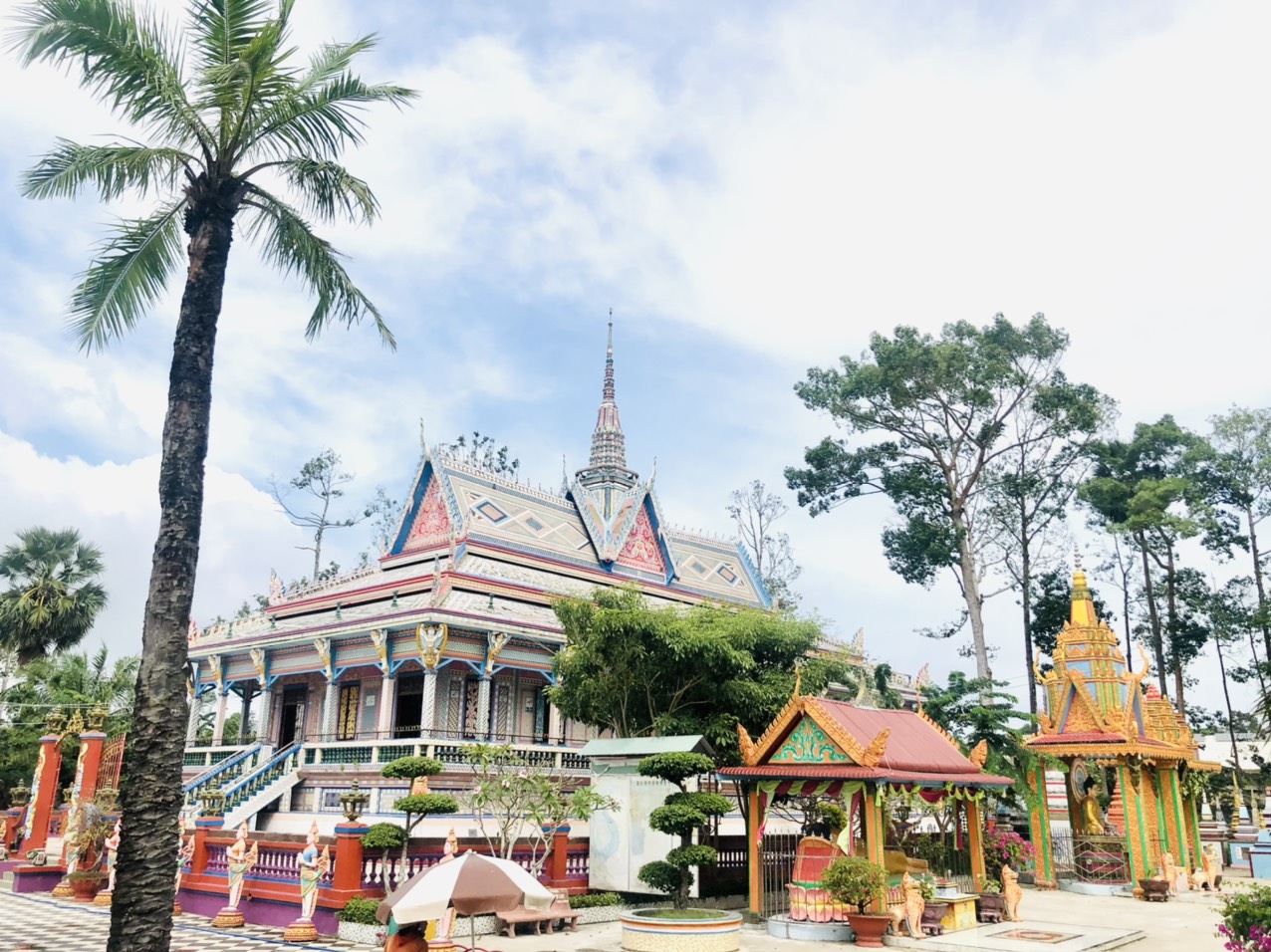
– The Soc Trang dugout race for the Ok om bok Festival takes place at the end of October, beginning of November depending on the year.
In Khmer cultural life, the dugout is a spiritual asset that only the village pagoda has the right to keep.
The Khmer dugout is 30 meters long and requires 55 to 60 rowers. It is decorated with brightly colored patterns. The race itself lasts only one or two days, the training takes at least one month.
In recent years, with the support of local authorities, this event is gaining momentum and attracting more and more spectators.
– Here also many Khmer pagodas, such as the temple of the bat of Soc Trang, Som Rong, Chen Kieu…
- Bac Lieu
Bac Lieu, these are huge rice fields, where some canals and palm trees are mixed.
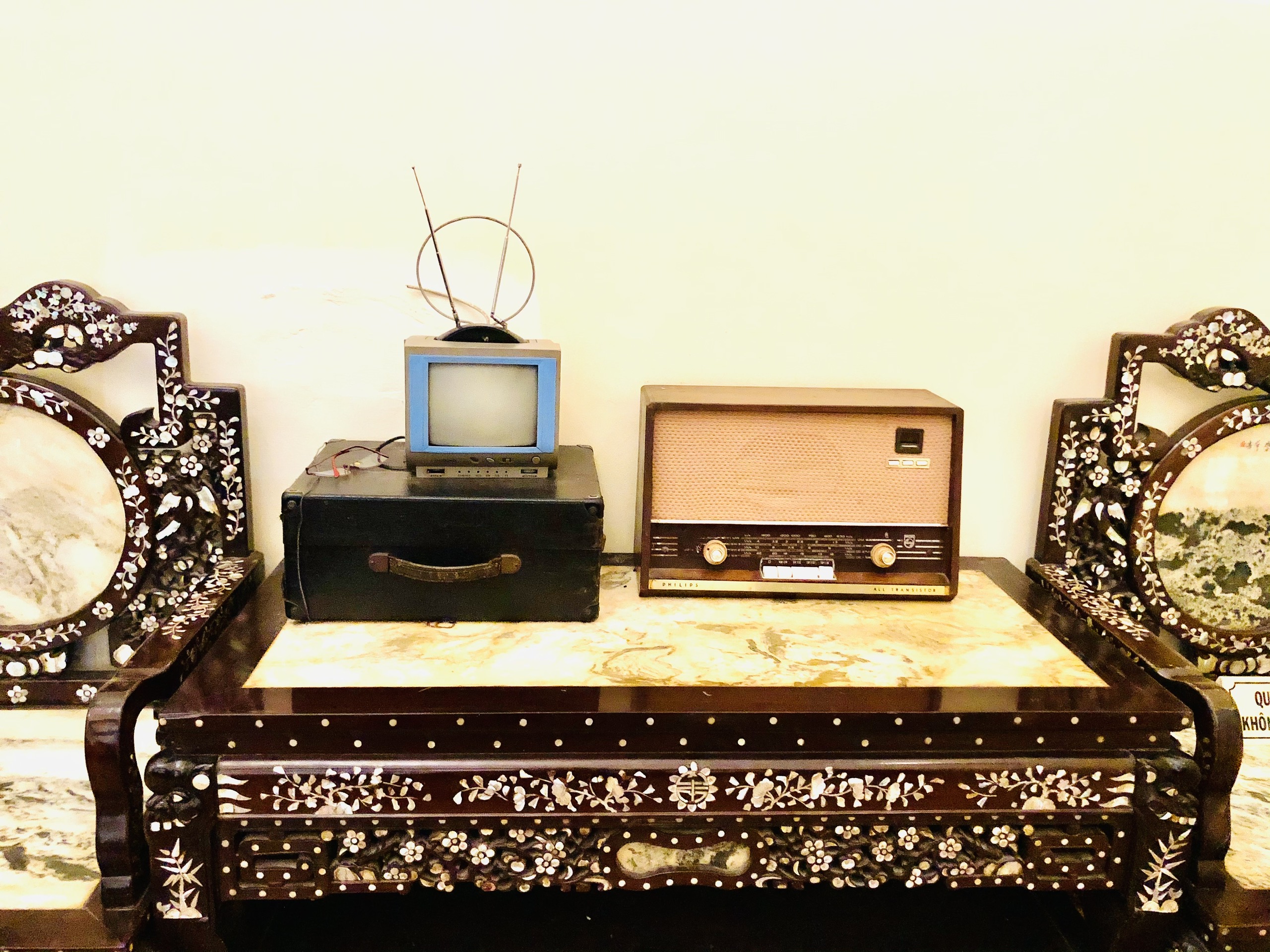
– Cong tu Bac Lieu: The house of the prince of Bac Lieu, the “King of rice in Cochinchina” is a building of French architectural style, it is the largest and most beautiful without doubt of the Mekong Delta.
Here let us tell you the story of this rich landowning family of the south whose descendants knew how to indecently squander the fortune !
The architecture is meticulous, delicate, elegant and luxurious, we are transported into another world during the visit.
– Don ca tài tu, a typical musical art of southern Vietnam that has been declared a UNESCO World Heritage Site.
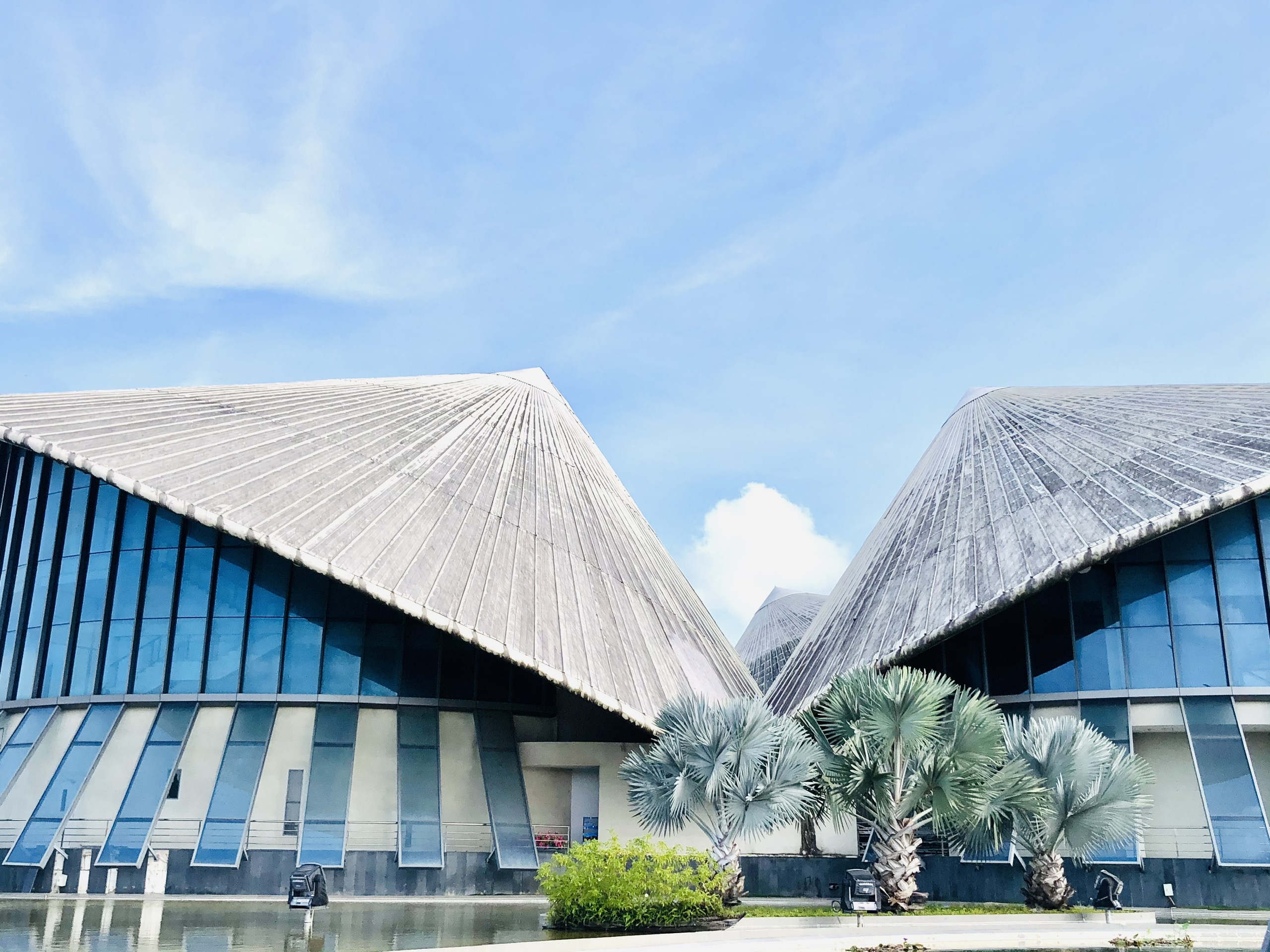
Bac Liêu is considered to be the cradle of this art. It is indeed in this province that the greatest masters were trained during the 20th century. In Bac Liêu, there is no celebration without Don ca tài tu, those who know how to play a musical instrument play and those who know how to sing sing. Playing or singing out of tune is not a serious matter, one starts over and over again, until one has mastered the art of playing and singing enough to be able to perform at all kinds of festivals.
– In Bac Lieu, there is a unique ancient longan garden that gathers hundreds of longans with a nervous appearance bearing the imprint of time.
– The mangrove forest which covers more than 385 hectares is the residence and nesting place of many species of plants, birds, frogs, …
– Bac Lieu is also the largest marine wind farm in Vietnam.
- Ca Mau
There, the land advances in the sea, it is the country of the mangroves and the birds!
– Thi Tuong Lagoon is a natural lagoon with the largest area in the Mekong Delta, it is known as “the lake in the middle of the delta”, it is one of the largest fish and shrimp breeding ponds in the delta.
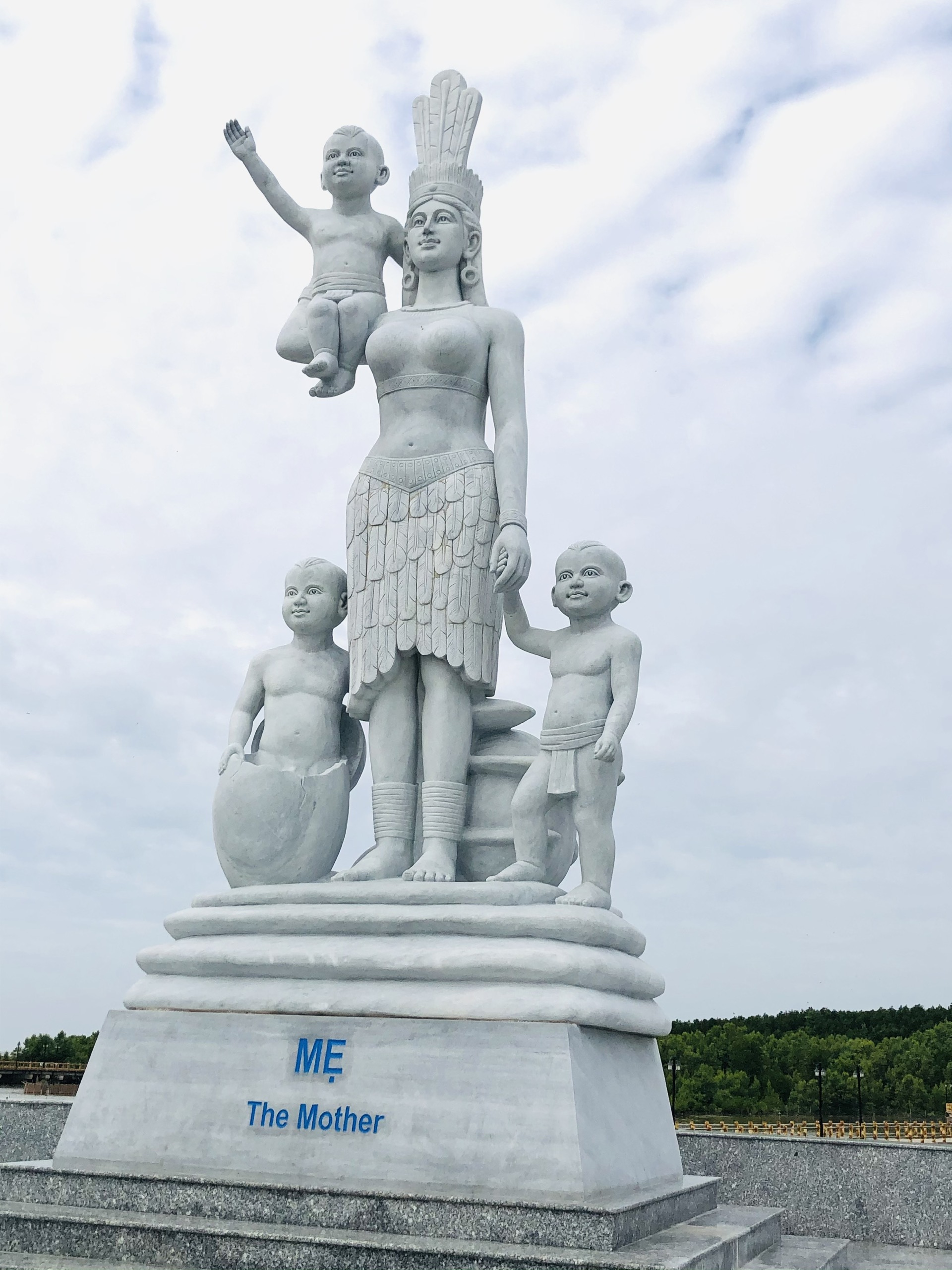
– U Minh Hạ National Park has the remarkable feature of a Melaleuca forest ecosystem.
Paradise where you can explore the forests, mangroves and swamps, ideal places for ornithologists, botanists and nature lovers.
In a stable and suitable ecological environment, birds gather to breed, live and grow in large numbers.
The park is home to 250 plant species, 182 bird species, 20 species of reptiles and amphibians, 40 species of mammals and many other species of insects.
– Cape Ca Mau National Park, at the very end, is an ecosystem of natural mangrove forest, the second largest in the world, after the Amazon forest in South America.
And at the end, it is the sea!
- Kien Giang
It is above all the maritime route to the island of Phu Quoc.
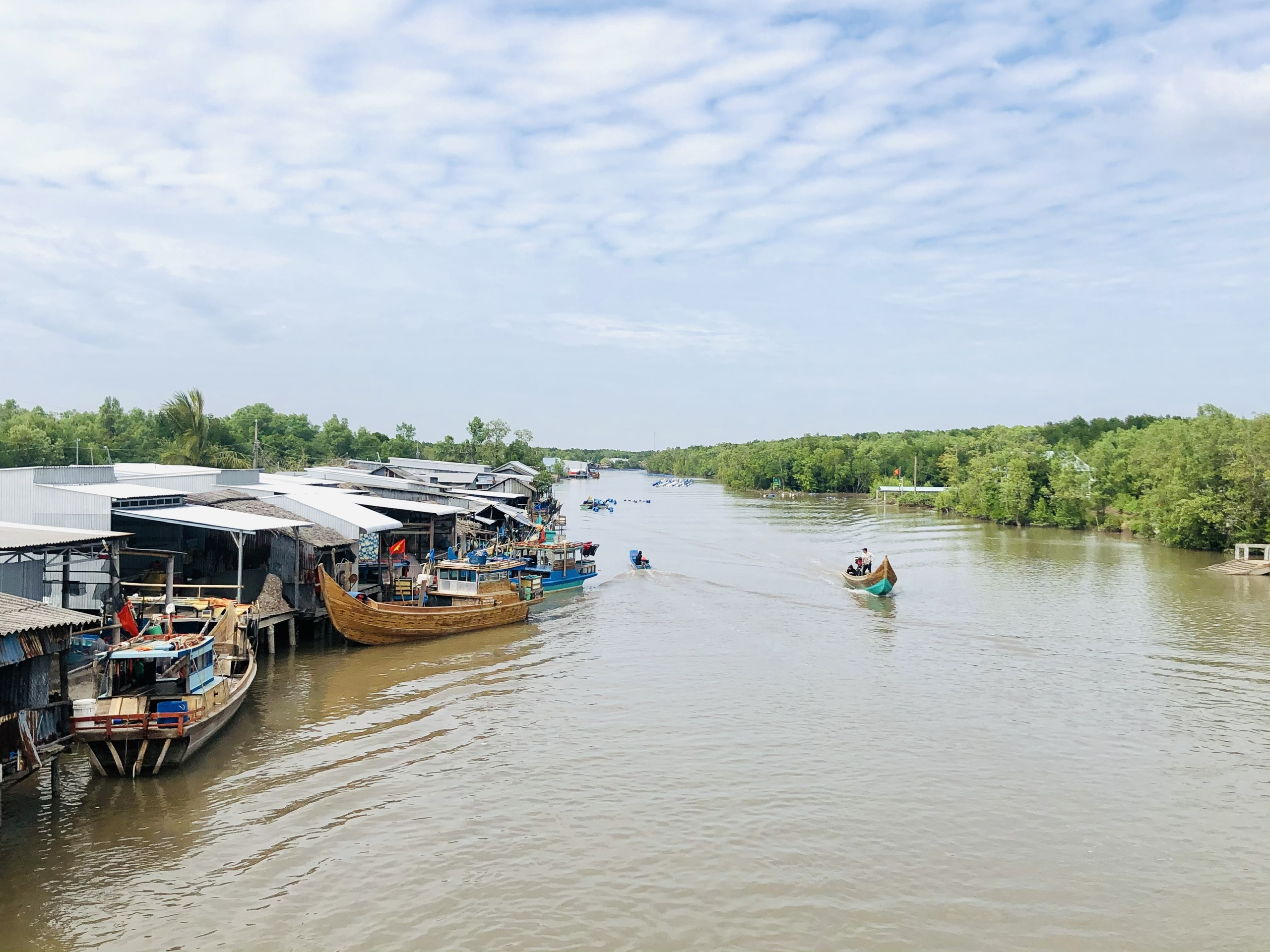
It is also, rice fields, rice fields and rice fields !
– U Minh Thượng Park, an area of greenery and nature that is home to a number of wetland wildlife such as ebony squirrel, spotted civet and Javan squirrel. Among them, 10 species are listed in the Red Book of the World, such as hairy-nosed otters, fish cats and pangolins.
– Da Dung Mountain in Ha Tien, right on the Cambodian border, with its 14 large and small caves, is associated with many legends and historical events.
– The beach of Mui Nai attracts by the wild beauty of its natural landscape between the mountain, the sky, the clouds and the sea.



